volume 11 | issue 4 | summer 2022
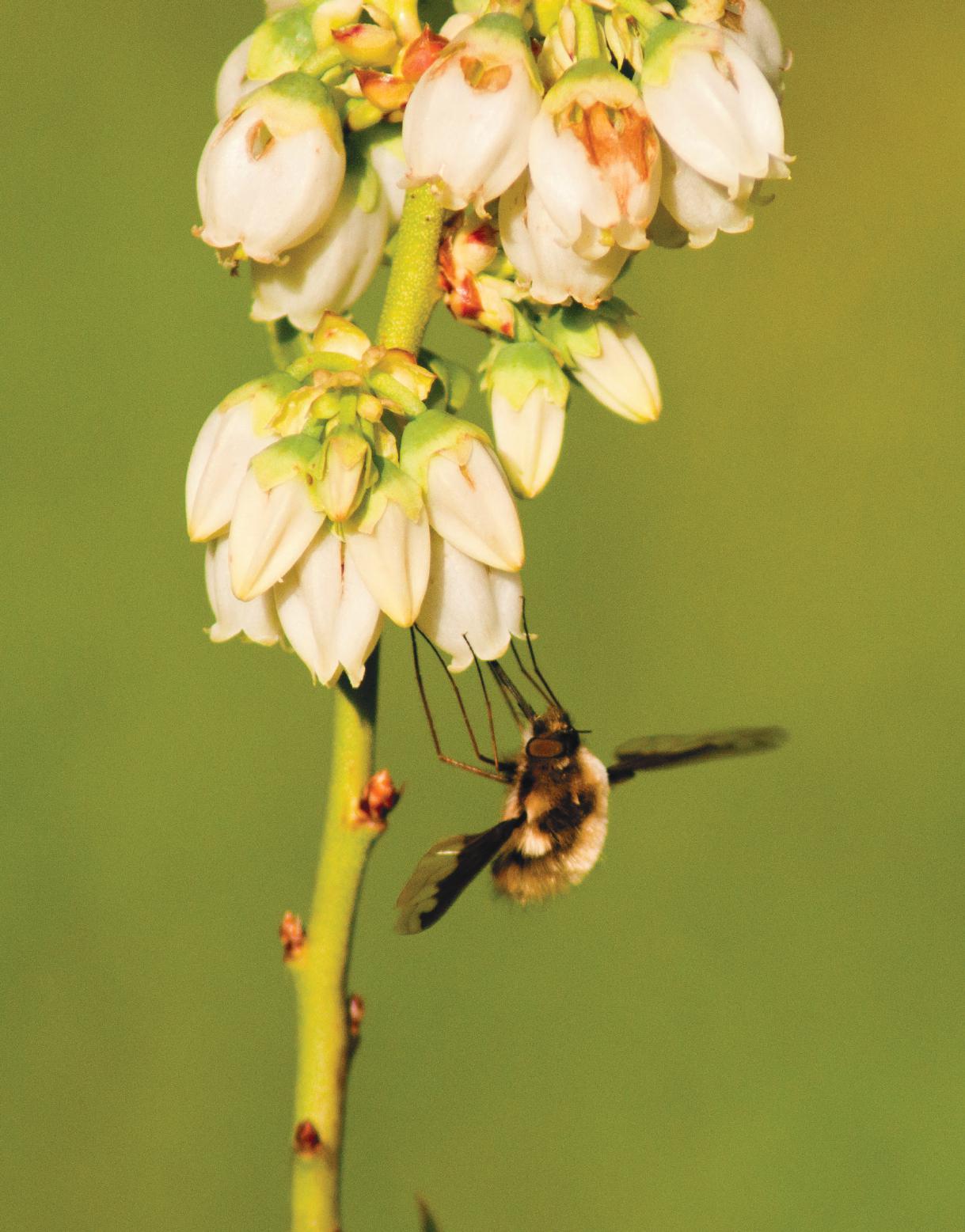
anticipate seeing not only a multitude of excited Jollibee patrons waiting to get their hands on their Jollibee favorites, but also first-timers waiting to have their own Jollibee experience," said Jose Miñana, Jollibee Foods Corporation's Group President for North America. "There's no greater joy for us than serving the needs and tastes of Jollibee fans in the community. At Jollibee, we aim to bring families together for happy moments over great tasting food with superior value, served with warm and friendly service –our own brand of joy." The brand has become a symbol of nostalgia and warm childhood memories for many overseas Filipinos in the U.S. To many, Jollibee is the go-to restaurant of Filipinos for both special
POSTHARVEST

JOLLIBEE page 15
See


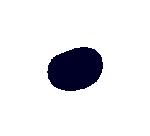







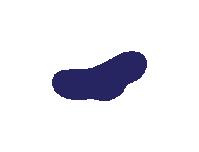
PESTS

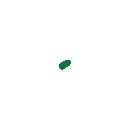
ipation and excitement, Jollibee, the largest Asian restaurant company, is now open in Jacksonville. This is the 36th store in the US, as well as the first in the state and Southeast US. It opened to the public on March 18, 2017. Jacksonville is the most populous city in the Sunshine State, as well as home to the largest FilipinoAmerican community in Florida. The longawaited arrival of Jollibee in the city has
NO. 4595
THE ENDORSED PUBLICATION OF THE FLORIDA BLUEBERRY GROWERS ASSOCIATION www.FloridaBlueberryGrowers.org
TOPIC OF THE SEASON Post-Harvest Pest, Disease Management Strategies STRIKING A BALANCE Summer Irrigation and Fertilization Guidelines IT STARTS AT THE NURSERY Spot Problems Early to Ensure a Healthy Start
& POLLINATORS Are We Spraying
FUNGUS AMONG US Summer Means It’s Target Spot Time PRSRT STD US POSTAGE PAID
PALM BEACH,FL
The Bees Away?
WEST
PERMIT
With the opening, Floridians will get to try Jollibee's signature menu items such as the world famous Chickenjoy. This dish is delicately breaded to be crispylicious on the outside and juicylicious inside. The well-loved Jolly Spaghetti is a favorite of both kids and kids-at-heart because of its signature sweetstyle sauce, loaded with chunky slices of savory ham, ground meat, and hotdog. Other classic menufavorites include the juicy and cheesy Jolly Hotdog, and the Peach Mango Pie, which is made with real Philippine sweet mangoes and a flaky golden brown crust. edition
Blueberry growers are faced with the consistent challenge of balancing pest and pollinator management. Fruit production is highly reliant upon insect pollinators. This requires growers to deploy managed pollinators and consider the effects of farm management on pollination. Unfortunately, pollinators are not the only insects that growers must consider. Read more on page 28.
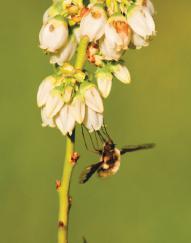

4 STRIKING A BALANCE

Irrigation and fertilization are important cultural practices during the summer when growth of new fruiting wood for next year’s crop is developing. Taken together with an effective pest- and diseasemanagement program, proper summer fertilization and irrigation will help maintain healthy, productive fields from one year to the next. The growth and overall health of blueberry fields during the summer and fall can have a significant impact on future productivity.
15 IT STARTS AT THE NURSERY

Growers take several steps to try to ensure the greatest likelihood of return on their investment when planting blueberries. Site preparation sets the tone for years to come, and if done properly, it can minimize certain risks ranging from cold temperature injury to Phytophthora root rot. Selecting resistant varieties, choosing between tissue culture and rooted cuttings, and picking a nursery to place the order with are also important factors. This guide will help you recognize some of the problems encountered in the nursery that can lead to lingering issues in the field.
26 RIGHT ON TARGET









Target spot, a fungal leaf disease, is caused by the Corynespora cassiicolapathogen. It was first reported in blueberry in the US (on “Jewel” in Central Florida) in 2014. Florida growers have reported significant defoliation due to target spot on many southern highbush blueberry (SHB) cultivars since then. Here’s what to look for and how to manage it.

2 | The Blueberry News 6 President's Letter 10 USHBC Update 11 Topic of the Season 17 Grower 411 27 Publisher’s Interlude 30 Bug of the Month 33 Classifieds
ON THE COVER
POSTHARVEST THEENDORSEDPUBLICATIONOF THEFLORIDABLUEBERRYGROWERSASSOCIATION www.FloridaBlueberryGrowers.org volume11|issue4|summer2022 TOPIC OF THE SEASON Post-HarvestPest,DiseaseManagementStrategies STRIKING A BALANCE Summer Irrigation and Fertilization Guidelines IT STARTS AT THE NURSERY Spot Problems Early to Ensure a Healthy Start &PESTSPOLLINATORSAreWe Spraying The BeesAway? FUNGUS AMONG US Summer Means It’s Target SpotTime Appetizer s: Entrées: Advertisers Directory 2 Appell Pie 2 Calendar Events 10 Classified Ads 14 What’s Going On 3 Analysis:Cateringindustryrevenuesontherise 4 “Big Data” — Doesyourrestaurantneedit? 7 RiseBisquitsDonutstoopeninCoralSprings 11 Del Taco spices up expansion in the Southeast 13 STDPRSRTUS POSTAGEPAID BEACH,FLPALMWEST 4595NO.PERMIT WWW.TRNUSA.COM VOLUME 21 NUMBER 3 ◆ MARCH 2017 FLORIDA’S FOODSERVICE INDUSTRY NEWSPAPER ◆ $3 FLORIDA EDITION Jollibee's U.S. expansion continues with first Florida location opening Jacksonville, FL After much anticipation and excitement, Jollibee, the largest Asian restaurant company, is now open in Jacksonville. This is the 36th store in the US, as well as the first in the state and Southeast US. It opened to the public on March 18,2017.Jacksonville is the most populous city in the Sunshine State, as well as home to the largest FilipinoAmerican community in Florida. The longawaited arrival of Jollibee in the city has "As Jollibee debuts in Florida, we anticipate seeing not only a multitude of excited Jollibee patrons waiting to get their hands on their Jollibee favorites, but also first-timers waiting to have their own Jollibee experience," said Jose Miñana, Jollibee Foods Corporation's Group President for North America. "There's no greater joy for us than serving the needs and tastes of Jollibee fans in the community. At Jollibee, we aim to bring families together for happy moments over great tasting food with superior value, served with warm and friendly service our own brand of joy."Thebrand has become a symbol of nostalgia and warm childhood memories for many overseas Filipinos in the U.S. To many, Jollibee the go-to restaurant of Filipinos for both special been the talk of the town since 2016. With the opening, Floridians will get to try Jollibee's signature menu items such as the world famous Chickenjoy. This dish delicately breaded to be crispylicious on the outside and juicylicious inside. The well-loved Jolly Spaghetti is favorite of both kids and kids-at-heart because of its signature sweetstyle sauce, loaded with chunky slices of savory ham, ground meat, and hotdog. Other classic menufavorites include the juicy and cheesy Jolly Hotdog, and the Peach Mango Pie, which is made with real Philippine sweet mangoes and a flaky golden brown crust. See JOLLIBEE page 15 and sustainable sourcing, local and seasonal produce, and global flavors and forms, all done within the steakhouse format showcasing cuts of meat as entrées with a choice of sides. Moreover, new menu categories (such as flatbreads) and service elements freshen the concept. About the Report 2017 Forecast: Culinary Trend Tracking Series offers an outlook on the culinary trends—the foods, dishes, ingredients and flavors—that Packaged Facts expects to grow in popularity in 2017. Rockville, MDWhen comes to American cuisine, there are few things more iconic than steakhouses. The slabs of marbled meat, the sizzling grills, the oozing butter, and the dripping bravado, maybe even cowboy hat or two for ambiance—it's enough to make even fictional steakophile Ron Swanson misty-eyed. Yet for all the traditional steak dinners ordered daily, there are restaurants nationwide pushing the concept of the all-American steakhouse to new culinary heights, according to market research firm Packaged Facts in the brand new report 2017 Forecast: Culinary Trend Tracking Series. "The steakhouse back and will capture our attention in 2017. Not that the classic restaurant style ever disappeared, but a renewal of the model is taking place in response to new sources of beef and new flavorful expressions of the concept that get chefs and diners excited," says David Sprinkle, research director, Packaged Facts. Today's steakhouse menus increasingly feature grass-fed cattle, locally raised animals, heritage varieties, meat butchered and dry aged in-house, and dishes that stem from the whole animal, not just the premium cuts. And that's just the meat. Creative side dishes in lieu of old standards, global and seasonal flavors, and a wider menu selection also distinguish these new school operations. Chefs and consumers both want their meat to taste delicious and to feel good about its’ consumption, too. This new breed of steakhouse broadcasts its mission to support local ranchers, factor in sustainability and animal welfare, and create a dining experience that showcases culinary flair, not just a grill master's skill at cooking steak to the requested doneness. These operations are also designed to be more inclusive, more of great place for all kinds of people to dine well, not just traditionminded men on expense accounts. As result, the modern steakhouse is increasingly similar to other modern restaurants with a focus on distinctive 2017 forecast:Steakhouses beef up menus with new twists on American classics See STEAKHOUSE page 11 edition
fieldsequip.com 3203 HAVENDALE BLVD WINTER HAVEN, FL 33881 863-967-0602 3440 US HIGHWAY 17 SOUTH ZOLFO SPRINGS, FL 33890-0837 863-735-1122 17215 HIGHWAY 27 NORTH MINNEOLA, FL 34715-9273 352-394-7181 John Deere 3025E tractor 300E Loader RC2060 Rotary Cutter 20’ Car Hauler Trailer “Nothing Runs Like a Deere” Test Drive One Today! Package Deal Only $28,827.00 ASK ABOUT ALL OF OUR TRACTOR PACKAGES
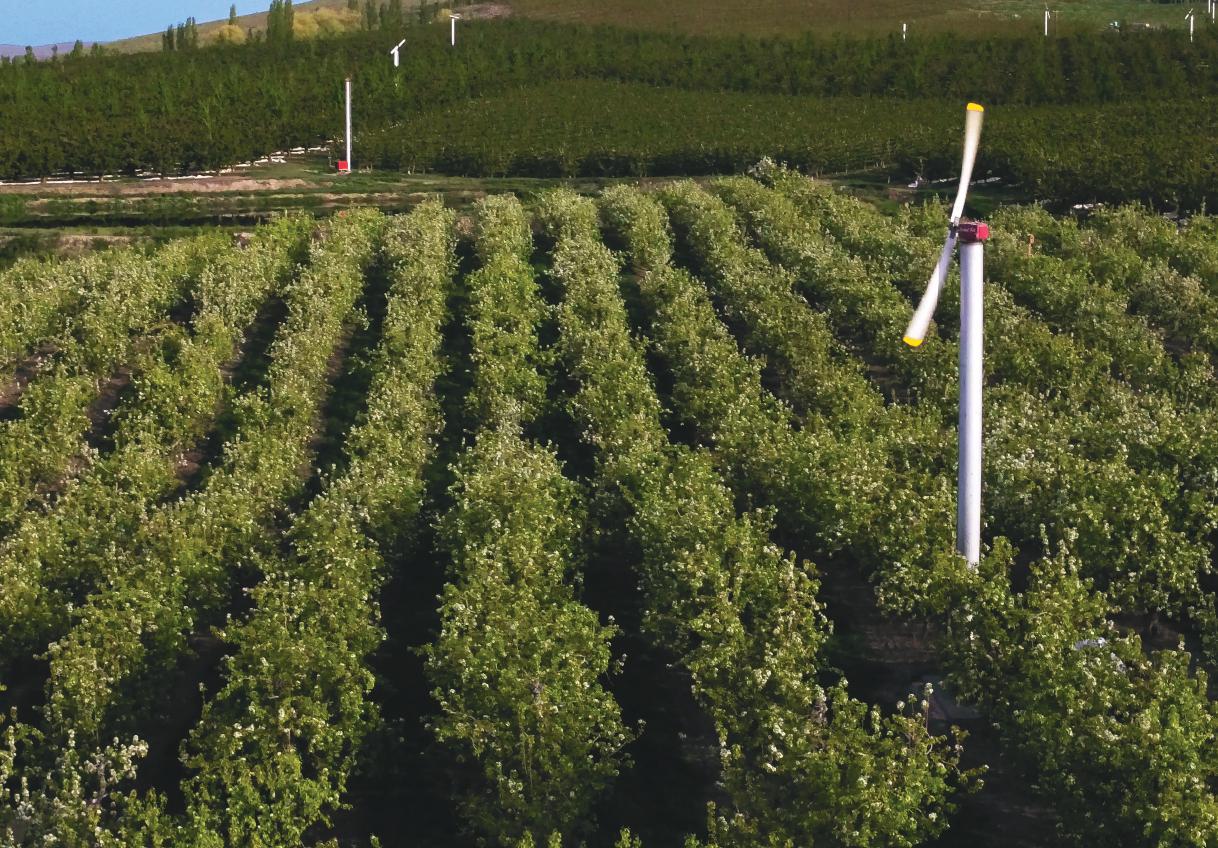

FloridaBlueberryGrowers.org The Blueberry News | 3 When one cold night can ruin an entire year’s hard work... It’s best to play it safe. Since 1967, we have hand-crafted our wind machines with precision technology. We take pride in the details, which is why blueberry growers from around the world trust Orchard-Rite® wind machines to protect their mature stock and new plantings from the dangers of frost. We are dedicated to serving you and your crops by providing the tools, knowledge and service to stave off those frosty nights, protecting your harvest and your future. Superior Wind Machine Sales & Service 616-971-8177 orchard-rite.com Authorized Distributor of Orchard-Rite® Wind Machines SUPERIOR WIND MACHINE SERVICE, INC. Over 37,000 SOLD Worldwide!
Striking a Balance
Proper Summer Irrigation, Fertilization Needed for Productive Fields
Irrigation and fertilization are important cultural practices during the summer when growth of new fruiting wood for next year’s crop is developing. Taken together with an effective pestand disease-management program, proper summer fertilization and irrigation will help maintain healthy, productive fields from one year to the next. The growth and overall health of blueberry fields during the summer and fall can have a significant impact on future productivity.
Irrigation
Water movement through the soil, plant, and atmosphere is governed by water potential. Water moves from high to low water potential. Generally, water potential is highest in the soil and lowest in the atmosphere, which facilitates the movement of water from the soil through the plant to the atmosphere. If the soil becomes too dry, its water potential is low, and this can interfere with water uptake by plants. Blueberries have shallow root systems without root hairs and are subject to drought stress during conditions of high evapotranspiration, which often occurs during the long hot days of summer and early fall in Florida (Figure 1). Moreover, Florida blueberry plants are often planted in sandy soils amended with pine bark that typically have limited water-holding capacities. Taken together, this means that the plants have a limited reserve of water available for uptake at any given time, which can make irrigation scheduling challenging.
Blueberry irrigation requirements are highly variable depending on crop development, weather, and canopy size. A mature blueberry planting may require roughly 40 inches of water (irrigation and rainfall combined) annually, depending on plant



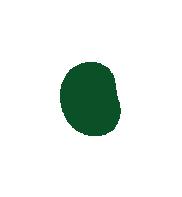

continued on page 8
PUBLISHER
Nelson Kirkland
MANAGING EDITOR
Jessica McDonald
ACCOUNT EXECUTIVE


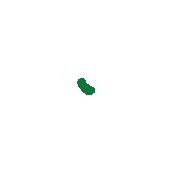



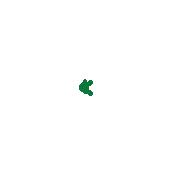


Juanita Halter
LIAISON EDITORS
Brittany H. Lee, Doug Phillips, Jeff Williamson
CONTRIBUTING WRITERS
Doug Phillips, Jeff Williamson, Jeff Williamson, Jenni Sparks, Oscar Liburd, Phil Harmon, Rachel Mallinger, John Ternest
CONTRIBUTING PHOTOGRAPHERS
Doug Phillips, Jeff Williamson, Phil Harmon
CONTRIBUTING ARTISTS
Dawn Lewandowski
DELIVERY

DLS Distributors

4 | The Blueberry News FloridaBlueberryGrowers.org www.FloridaBlueberryGrowers.com Published by Central Florida Media Group in cooperation with the Florida Blueberry Growers Association Copyright © 2022 Central Florida Media Group. ALL RIGHTS RESERVED. This issue of The Blueberry News is a trademark of Central Florida Media Group. Reproduction or use in whole or in part of the contents of this magazine without written permission is prohibited. The Blueberry News makes every effort to ensure the accuracy of content published. In the event of an error found herein however, neither the publishers or advertisers will be held responsible, nor do the publishers accept any liability for the accuracy of statements made by advertisers in advertising and promotional materials. Furthermore, the opinions and claims expressed in advertisements and promotional materials do not necessarily reflect those of the Florida 56 Fourth Street Northwest, Suite 100 Winter Haven, Florida PHONE 863.248.7537
field management

FloridaBlueberryGrowers.org 5
P.O. BOX 358086
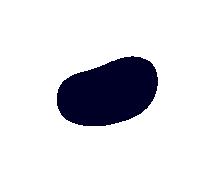
Gainesville, FL 32635
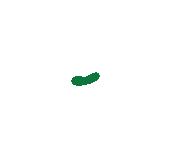







352-448-1418



OFFICERS
Brittany Lee, Executive Director fbga.ed@gmail.com
Leonard Park, President president.fbga@gmail.com
Jerod Gross, Vice President fbga.vp@gmail.com
Michael Hill, Secretary michael@handafarms.com
Bobby Barben, Treasurer rhbjr@barbenfruit.com
BOARD OF DIRECTORS
Wayne Bass
Jerod Gross
Phil Harmon
Gary Smith
Kyle Straughn
Jeff Williamson
Doug Phillips
Travis Kuhn
I Hear Harvest 2022 Went Pretty Well
I have heard this common theme from a number of growers. The 2022 season was described as “decent,” “an OK year,” or “I’m pretty happy with the season.” Not bad praise coming from a bunch of farmers.
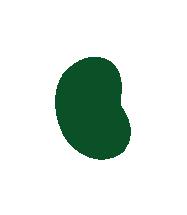
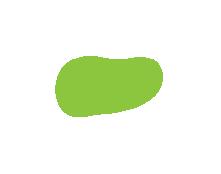
Florida crop reporting pegged the volume at north of 24 million pounds, a solid year. Early prices were good, and a lot of Florida fruit came off in that window. Chilean fruit production has been suffering recently, plus the delays from supply chain bottlenecks hurt their quality to the point where marketers and grocers were anxious to get our high-quality first picks. Though prices began their typical post-Easter decline, the downward slope was less severe than in some years until later April when the ever-growing Mexican imports merged with a smaller delayed crop from Georgia. Certainly, the late freezes in parts of Georgia lessened the typical volume peak that can crash pricing. What will happen next year if Georgia dodges late freezes and Mexico continues its expansion into our market window? I guess we’ll find out.
Evergreen operations with new low-chill varieties did quite well. Our more southerly Florida farms picked good volume in Florida’s desirable early season. The recent plantings of varieties like Arcadia and Avanti are maturing and starting to make a strong positive impact on volume and revenue.

I also heard from some folks who had good success with stalwart varieties like Emerald and Jewel. Despite some concerns with Dormex damage, growers I spoke with ended up with some heavy crops at decent prices. For the most part, the numerous frosts in parts of Florida caused little crop reduction. Our growers are experienced with frost protection and were well prepared. Disease pressure was fairly subdued, though anthracnose fruit rot showed up on some farms. SWD has not disappeared, so many growers continue to defend against this pest that plagues farms as the season advances and weather becomes warmer and more unstable. Some Central Florida growers (like us) were forced to suppress chilli thrips and spider mites even while focused on the harvest. Central Florida weather was warm enough and dry enough to promote insect populations. Picking labor was generally available, and folks were able to get their crops off the field. The serious health concerns of Covid finally subsided, so harvest activities were able to move forward with less stress. However, the blueberry industry is not immune to the geopolitical world and the economy. It was really challenging to get trucking and truck drivers lined up and committed. Reefers are in short supply and driver pay is bidding up. Don’t count on a reprieve from supply constraints and cost increases next season, so it’s best to plan way ahead to lock in the resources you need before harvest.
As for Frogmore, our farm in Central Florida, we did better than we expected going into March. If you read my letter in the Spring edition of The Blueberry News, you might remember I had concerns with our economy (inflation, war in Ukraine, the supply chain). And Mother Nature seemed against us (too few chill hours early, then cold freezes came later, which seemed to confuse flowering and the crop). After all was said and done, we just made our volume plan. We hand-picked more early fruit, then kept machines picking past mid-May. For the most part harvest weather cooperated keeping fruit quality up and harvesting on schedule. We did have some Dormex damage from low chill in December, especially in our Farthing. Fortunately, I guess, many chilly late winter nights fostered an unexpected delayed second crop that made up for the shortfall we anticipated. And finally, our Meadowlark had its best pollination in years to put us over the top. Other growers seemed to experience the same atypical flowering episode. Yes, costs were up: fuel, labor, fertilizer, and especially transportation. Fortunately, grocers seem to be coming around to the fact that customers really do want high-quality local fruit. Remind your marketer, and their grocers, that supporting Florida farms is good business this season and will be for years to come. We are here. We have blueberries when they need them. We have really fresh fruit that tastes great. It’s nice to know consumers really do want Florida blueberries!
Leonard Park President Florida Blueberry Growers Association


6 | The Blueberry News FloridaBlueberryGrowers.org
president’s letter
Polk County Ranch and Blueberry Farm
POLK CITY, FLORIDA | $7,100,000 | 827 ± ACRES
The property features 30 acres of well-maintained blueberry farm irrigated with an 8” well and overhead irrigation system with permitted water use of 201,000 gallons/day and 5,300,000 gallons per day for cold protection. The surface water irrigation system has unlimited use. The balance of the land is improved pasture with a light mix of woods and cypress pond. The property is protected by a conservation easement granted to the State of Florida. Rights reserved include the ability to construct 2 new single-family homes up to 5,000 SF each. James Allen, 863-738-3636
Central Florida Organic Blueberry Farm

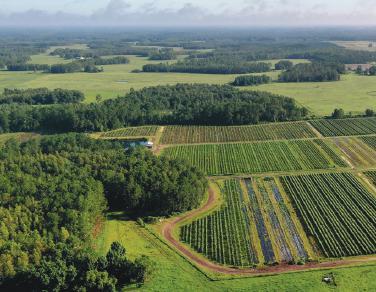
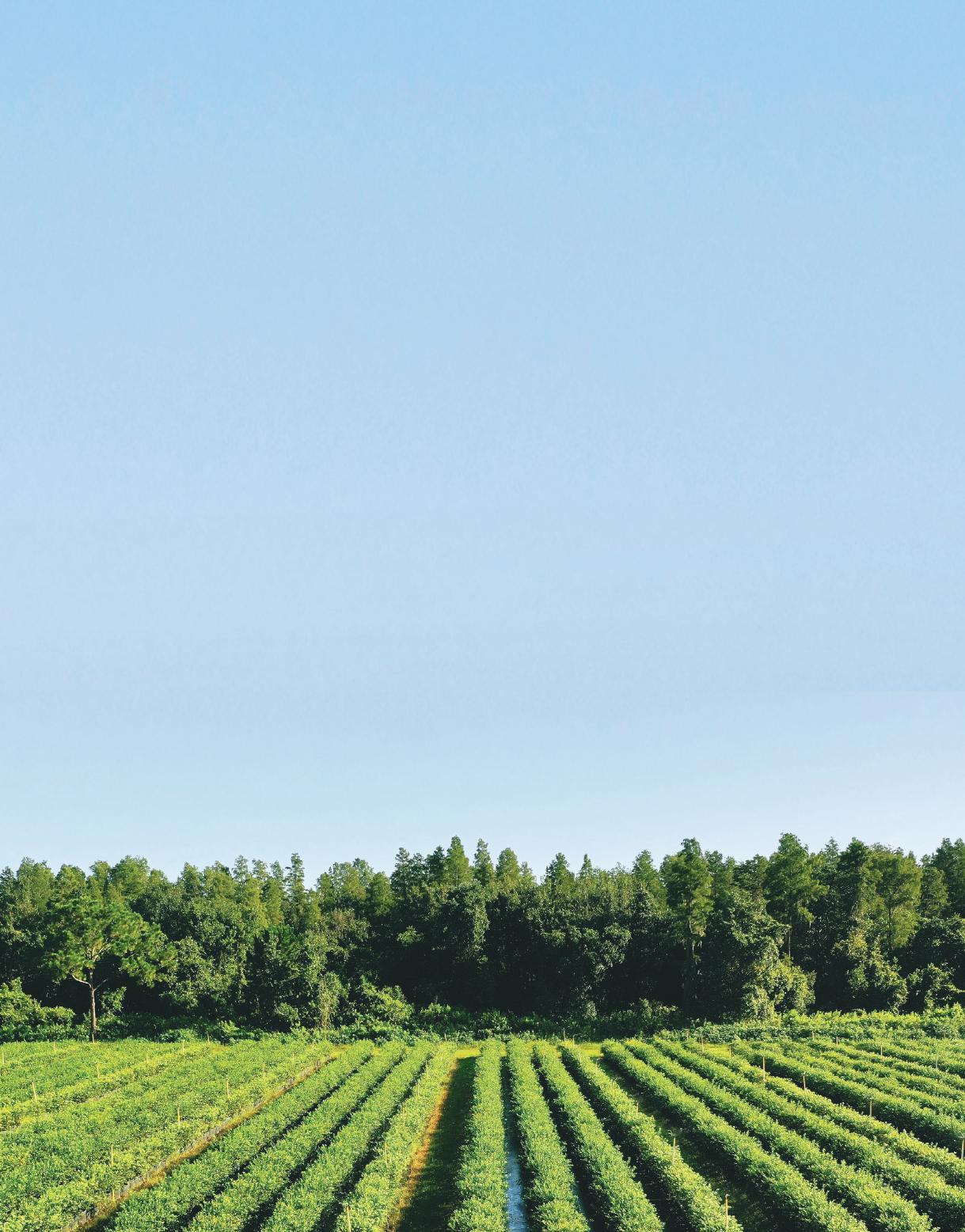
CLERMONT, FLORIDA | $1,700,000 | 60 ± ACRES
The Central Florida Organic Blueberry Farm is a 60 ± acre farm in south Lake County. This operation is turn-key with infrastructure in place for an easy transition in ownership. This farm currently has 44 ± acres in organic production. Varieties for this acreage include Arcadia, Avanti, Chickadee, Emerald, Kestrel, and Spring High. There is an additional 45 ± contiguous acres available with a 1,100 SF log home built in 2005, excellent for a farm manager.
Carson Futch, 863-559-0800 and Zeb Griffin, 352-630-7547
SVN Saunders Ralston Dantzler Real Estate 1723 Bartow Rd, Lakeland, Florida 33801 • 877-518-5263 • SVNsaunders.com
field management , continued from page 4
spacing and canopy coverage of the field. During periods of fruit development or rapid canopy growth, water in excess of one inch per week may be required. For example, in a study in North-Central Florida, mature “Emerald” plants used an average of about 2 gallons of water per day during the peak periods of water use in May and again from July through September. Two gallons applied evenly to a bed area of 3 by 4 feet would be approximately 0.27 inches of water applied to that area. During periods of high water demand, shorter duration irrigation events applied multiple times per day will increase water use efficiency and reduce potential leaching of fertilizers and pesticides compared to longer, less frequent irrigation events. The goal should be to keep the root zone moist without applying water below the rootzone. Knowledge of crop water demand, average rooting depth, wetting pattern of the irrigation system, and the
water-holding characteristics of the soil will help achieve this goal.
Knowing when to apply irrigation is critical to meeting plant water needs in advance of drought stress.
During especially hot periods with high evaporative demand, temporary mid-day wilting may occur on young, tender growth even when plants are adequately irrigated. However, prolonged drought stress can impair vegetative and reproductive growth and make plants more susceptible to diseases such as stem blight.
Soil moisture sensors can supply data on water content at different depths, providing growers with the information needed for proper irrigation scheduling. This information can potentially reduce water use while maintaining or enhancing plant growth and fruit quality. The goal is to keep soil moisture within a targeted range by replacing water lost through evapotranspiration.
Common groups of moisture sensor types include those that measure soil water content (volumetric) and those that measure soil water tension (the force of adhesion of water to soil particles). Sensors measuring soil water content can indicate when and how much to irrigate. See UF EDIS Publication BUL343, Field Devices for Monitoring Soil Water Content (Munoz-Carpena, 2021) for more details. Sensors that measure water tension such as tensiometers may not work well in most Florida blueberry fields because of the high sand and bark content of the soil. Sensors should be placed in accessible areas away from field edges, in areas that are representative of the field in which they will be measuring moisture. Sensor depth should be within the root zone. Sensors placed at different depths will provide more information. Sensors placed close to the soil/bark surface will signal when to irrigate, and sensors at a lower depth (toward the bottom of the
8 | The Blueberry News FloridaBlueberryGrowers.org
Element Deficiency Below Standard range for highbush Excess above Minimum Maximum MACRO ELEMENTS Nitrogen (N) 1.70% 1.80 2.10 2.50 Phosphorus (P) 0.10 0.12 0.40 0.80 Potassium (K) 0.30 0.35 0.65 0.95 Calcium (Ca) 0.13 0.40 0.80 1.00 Magnesium (Mg) 0.08 0.12 0.25 0.45 Sulfur (S) 0.10 0.12 0.20 NA MICRO ELEMENTS Iron (Fe) 60 ppm 60 200 400 Manganese (Mn) 23 50 350 450 Zinc (Zn) 8 8 30 80 Copper (Cu) 5 5 20 100 Boron (B) 20 30 70 200 Paul Eck, Blueberry Science, Rutgers University Press, New Brunswick, NJ | NA=not available
Table 1. Essential mineral element levels for highbush blueberry.
root zone) will indicate how far water has penetrated, indicating how much to irrigate. If only one sensor per site is used, it should be placed at a depth in the middle of the root zone. In fields with significant variability (e.g., slope, wetness, cultivar type, plant age, etc.), multiple sensor sites should be established.
Consideration of the nature of the blueberry root system, the use of pine bark beds, varying blueberry water needs throughout the year, and available tools for monitoring root zone moisture will help growers establish and maintain efficient irrigation practices, and avoid excess water use and leaching of nutrients below the root zone.
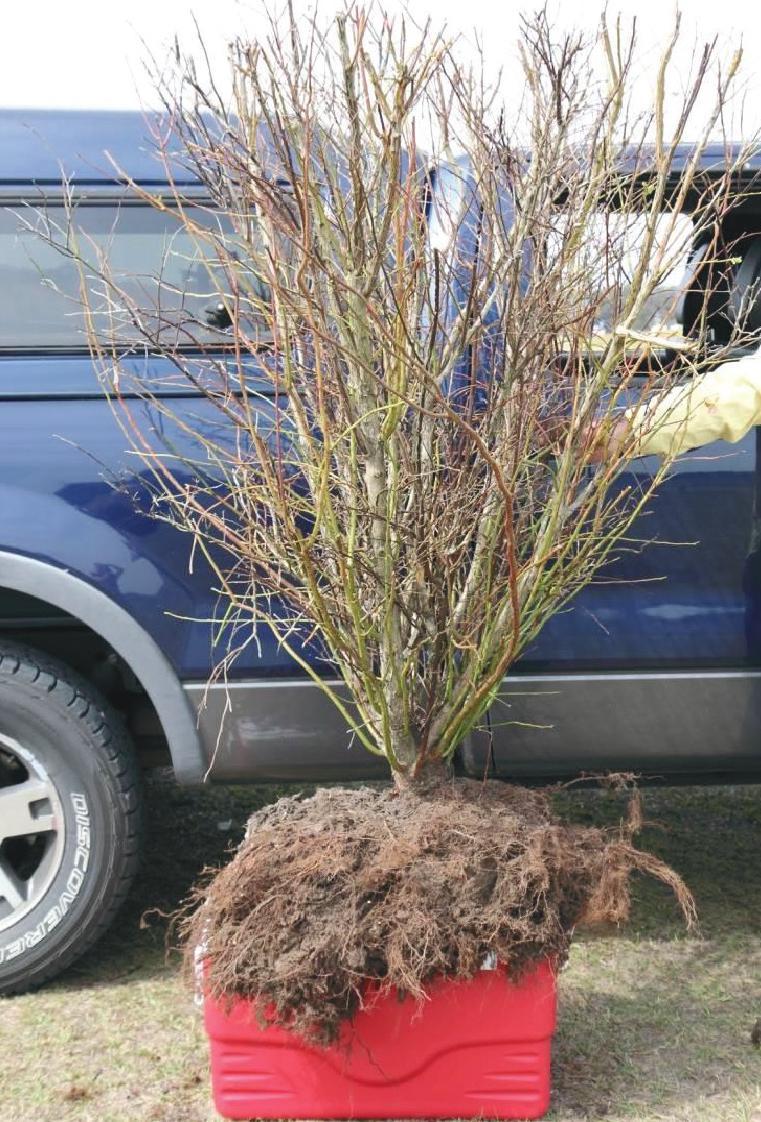
Fertilization
Along with irrigation, fertilization is critically important to maintain the health and vigor of blueberry plants during the summer and fall. Both practices are closely linked. For example, essential nutrient elements must be in solution for plant uptake, but excessive irrigation can move these elements below the root system, preventing their uptake.
Nitrogen (N) is a key element needed for vegetative growth during the summer, which re-establishes fruiting wood for next year’s crop. Blueberries prefer nitrogen in the ammoniacal form. There are numerous sources of fertilizer that contain ammonium, or compounds that convert to ammonium. These include dry granular, liquid (fertigation), and slow or controlled-release types of fertilizers. Growers often use a combination of fertilizer types to help ensure essential elements are available for plant uptake. Nitrogen and some other essential elements are subject to leaching in sandy soils or sandy soils amended with pine bark. Therefore, frequent applications of small amounts of fertilizer are usually more efficient and pose less risk of leaching and off-site contamination than larger, less frequent, fertilizer applications. Use of slow or controlled-release granular fertilizers can help to achieve similar results. In addition, new pine bark can immobilize the ammonium nitrogen, making it unavailable to blueberry plants. Growers should consider applying nitrogen to new bark beds at least three months prior to planting and increasing the nitrogen rate when new bark is added to existing plantings because the decomposition of fresh bark uses nitrogen
that would otherwise be available for plant uptake (Krewer and Ruter, 2012).
A 2017 study found that a significant portion of nitrogen allocated to flower and fruit development in young SHB (1–2 years old) came from the remobilization of nitrogen stored in roots and stems, so there was little nitrogen uptake from
March through May. The highest uptake of nitrogen took place from late summer through the middle of fall. This led to the conclusion that spring fertilization requirements of young SHB may be minimal, and nitrogen uptake appears to be most efficient from fertilizer applications in summer through early continued on page 20
FloridaBlueberryGrowers.org The Blueberry News | 9
Figure 1. Excavated southern highbush blueberry plant grown in a pine bark amended soil. The fibrous root system is shallow with most feeder roots in the top few inches of soil profile. Credits: Jeff Williamson
It’s Time to Put Blueberries in the Spotlight

It’s July, and you know what that means: National Blueberry Month. This power period is important for all in the blueberry industry, no matter where you are in the production cycle. July is a key time to spotlight the benefits of blueberries while the media and consumers are paying extra attention to this calendar-specific celebration.
USHBC is capitalizing fully on National Blueberry Month through media relations, social media, influencer spotlights, digital advertising, a cause-worthy consumer challenge, giveaways, and more – all to drive awareness, engagement, and demand for grabbing a boost of blue, not just in July but all year long. A special consumer landing page challenges consumers to celebrate with blueberries while helping to feed kids in need through a partnership with No Kid Hungry: blueberry.org/challenge. The goal is to turn blueberry consumers into blueberry enthusiasts who share their love of the amazing blue fruit.
As USHBC works nationwide to promote the benefits of blueberries, the organization is making it easy for the whole industry to join in with a National Blueberry Month Toolkit of resources (ushbc.org/toolkits) and a Step-By-Step Guide (ushbc. org/guide) – jam-packed with social graphics, ads, tips sheets, recipes, and more to enhance your marketing efforts, as well as loads of advice to guide your efforts.
Check out the toolkit to find tips and tools to boost your promotions:
• Give your audiences ideas all month: Download the 31 Ways Tip Sheet (https://bit.ly/3y6TXzY), it’s chock-full of delicious and fun ways for consumers to enjoy blueberries every day of the month. Use these ideas as content for your social posts throughout the month, or feature the PDFs in your e-newsletters or on your website.
• Enhance your social media plans: Download ready-to-use visual social content
(https://bit.ly/3y2CWH2), formatted as 1:1 squares for Instagram and more, to enhance your posts.




• Capitalize on digital tools: Use the digital ads (https://bit.ly/3HYbEWI) in five different standard sizes in your digital campaigns or even feature them on your own website.
USHBC is kicking off National Blueberry Month with an event in New York City for top-tier media to garner news coverage of the 31-day challenge and create buzz around Grab a Boost of Blue. Keep an eye on USHBC’s Behind The Blues weekly newsletter for more news and promotion ideas, and follow @blueberries social channels (Facebook, Instagram, Twitter) to follow the promotions throughout the month.
It’s going to be the best National Blueberry Month yet!
10 | The Blueberry News FloridaBlueberryGrowers.org
_________
USHBC Update
CREDIT JENNI SPARKS, North American Blueberry Council
topic of the season
Management Strategies For Summer
by DOUG PHILLIPS, UF/IFAS Blueberry Extension, JEFFREY G. WILLIAMSON, Horticultural Sciences Department, PHILIP F. HARMON, Department of Plant Pathology, OSCAR E. LIBURD, Entomology and Nematology Department, and PETER DITTMAR, Horticultural Sciences Department, all with the University of Florida/IFAS.



The following tables were updated from the 2022 UF/IFAS Florida Blueberry Integrated Pest Management Guide found at edis.ifas.ufl.edu/hs380. This publication is intended for use only as a guide. Specific rates and application methods are on the pesticide label, and these are subject to change at any time. Always refer to and read the pesticide label before making any application! The pesticide label supersedes any information contained in this guide, and it is the legal document referenced for application standards.
POLLINATOR PROTECTION
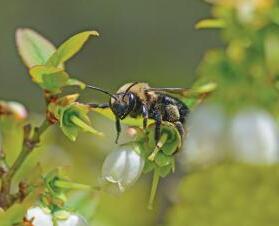
Before making insecticide applications, monitor insect populations to determine if treatment is needed. If insecticide application is necessary:
1. Use selective pesticides to reduce risk to pollinators and other non-target beneficial insects.
2. Read and follow all pesticide label directions and precautions. The label is the Law! EPA now requires the addition of a “Protection of Pollinators” advisory box on certain pesticide labels. Look for the bee hazard icon in the Directions for Use and within crop specific sections for instructions to protect bees and other insect pollinators.
3. Minimize infield exposure of bees to pesticides by avoiding applications when bees are actively foraging in the crops. Bee flower visitation rate is highest in early morning. Apply pesticides in the late afternoon or early evening to allow for maximum residue degradation before bees return the next morning. Bee foraging activity is also dependent upon time of year (temperature) and stage of crop growth. The greatest risk of bee exposure is during bloom.
4. Minimize off-target movement of pesticide applications by following label directions to minimize off-target movement of pesticides. Do not make pesticide applications when the wind is blowing towards bee hives or off-site pollinator habitats.
SUMMER DISEASES AND PESTS ON SOUTHERN HIGHBUSH BLUEBERRY ALGAL STEM BLOTCH
Algal stem blotch is a blueberry disease caused by the parasitic green alga Cephaleuros virescens Kunze, and it has become a significant disease on southern highbush blueberries in Florida. The alga is thought to enter the plant through natural wounds and openings, through pruning cuts, or by direct penetration of the cuticle. Early symptoms include small red blotches or lesions on green juvenile stems, with lesions expanding to form irregular cankers that can encircle canes. Bright-orange felt-like mats or tufts of algal growth appear from the lesions on young stems and older cane surfaces during summer and early fall when conditions are hot and humid. Leaves on symptomatic canes bleach white to pale yellow, and growth of the entire plant can be severely stunted as the disease advances. Leaf yellowing tends to occur on a few canes of each plant and is less uniform and blotchier than symptoms of nutritional deficiency. Algal stem blotch can lead to increased susceptibility to Botryosphaeria stem blight, in some cases leading to plant death. Plants that are stressed by abiotic or biotic factors are more susceptible to infection and subsequent disease development. To date, no systemic pesticide products have been found that will kill the algae living underneath the plant epidermis. Spray applications of copper-containing fungicides can help to reduce algal sporulation and protect healthy canes from infection for a few days after application. However, these applications do not impact existing symptoms or eradicate the disease. See Table 1 and EDIS publication PP344, “Algal Stem Blotch in Southern Highbush Blueberry in Florida” (https://edis.ifas.ufl.edu/ publication/PP344).
ANTHRACNOSE LEAF SPOT, RUST, SEPTORIA, AND TARGET SPOT
Anthracnose, Septoria, rust, and target spot can cause premature defoliation, resulting in poor bud development and subsequent loss of yield. Fungicide timing for leaf spots varies across the state and by specific disease. Septoria can occur prior to harvest through late spring. Anthracnose leaf spots and target spots generally start postharvest and persist through summer. Rust is a problem in all Florida production areas. On susceptible varieties, rust can prematurely defoliate plants. Where leaves are not dropped in winter, rust can carry over on the previous year's foliage and can cause rust problems in early spring as well. Bravo Weather Stik® is labeled for control of both rust and Septoria leaf spots; this chlorothalonil product makes an excellent rotation partner for the strobilurin-containing products Abound® or Pristine®. However, Bravo Weather Stik® can only be used after harvest because chlorothalonil will damage fruit. See Table 1 and EDIS publication PP348, “Florida Blueberry Leaf Disease Guide” (https://edis.ifas.ufl.edu/publication/PP348).
continued on next page
FloridaBlueberryGrowers.org The Blueberry News | 11
topic of the season
continued from previous page
SUMMER DISEASES AND PESTS, CONT.
AZALEA CATERPILLAR
The azalea caterpillar, Datana major, can be found in Florida from late summer to early fall on blueberries. Immature caterpillars are around 1/2 inch long and reddish to brownish-black with yellow and white stripes. Mature caterpillars are about 2 inches long and black with yellow to white stripes and a reddish head and legs. If left uncontrolled, a significant infestation can defoliate much of a plant. Although these caterpillars seldom kill the plants they feed on, the stress caused by defoliation can reduce flowering or fruiting the following spring. See Table 2.
BACTERIAL SCORCH (XYLELLA)
Bacterial leaf scorch, caused by Xylella fastidiosa, was first identified on blueberry in 2006 in the southeastern United States. Symptoms begin as a marginal-irregular leaf scorch, which may appear similar to symptoms of bacterial wilt or drought stress. Symptoms are initially observed on leaves attached to individual stems or groups of stems on one side of a plant. Plant vigor is reduced, stems and twigs of some varieties such as 'Meadowlark' turn a distinctive yellow color, and the plants eventually die. Diseased plants are typically observed randomly scattered throughout a field, rather than in distinct circles or groups within a row. Infected plants should be removed and destroyed. This bacterial pathogen is vectored by insects called sharpshooters and spittle bugs, including the glassy-winged sharpshooter. Infection levels may be reduced by controlling the vector with suggested insecticides.
BACTERIAL WILT (RALSTONIA)
Symptoms of bacterial wilt are similar to those of bacterial scorch, exhibiting signs of drought stress such as wilting and marginal leaf burn. Infected plants may also be more susceptible to developing severe symptoms of other stress diseases, such as Botryosphaeria stem blight, and therefore may show symptoms of both diseases. Crowns of plants with bacterial wilt have a mottled discoloration or light-brown to silvery purple blotches with poorly defined borders (distinct from the discoloration associated with stem, which is typically pie-piece-shaped and pecan brown in color). Wood chips floated in water from the crowns of plants with bacterial wilt will stream bacterial ooze (unlike plants with bacterial scorch or stem blight). Ralstonia can be spread easily in water, in soil, or through infected plant material, and infected plants may not initially show symptoms. Ralstonia can survive for years in soil, slowly spreading down and across rows of blueberry, leaving large circular patches of dead and dying plants. Where the bacterium is detected, remove and burn or deep-bury infected plants. Then, use soil drenches of products with phosphorous acids or salts to help protect surrounding plants or any replants from infection. See Table 1 and EDIS publication PP332, “Bacterial Wilt of Southern Highbush Blueberry Caused by Ralstonia solanacearum” (https://edis.ifas.ufl.edu/publication/PP332).
BLUEBERRY BUD MITE
The blueberry bud mite is an eriophyid mite so tiny (i.e., 1/125 inch long) that it cannot be seen without magnification. Blueberry bud mite is an occasional pest in well-established blueberries in Florida. Bud mite injury is often confused with frost damage and may become more visible in late spring. In early spring, infested plants exhibit stunted, succulent, fleshy, closely packed, reddish, and rosetted buds, which may dry up and often fail to open. Bloom on infested plants is reduced. Affected berries are small and rough and may have small, reddish pimples or blisters on the fruit surface. Sanitation by aggressive, timely pruning of infested branches can be helpful. Mechanical topping (i.e., mowing old fruiting twigs) immediately after harvest greatly reduces bud mite incidence the following year. Bushes that may be infested with blueberry bud mite should never be used for propagation. The application of horticultural oil immediately after harvest can help in the control of blueberry bud mite. A new miticide, Magister® (fenazaquin) was recently registered in blueberries and should provide some protection against eriophyids. The insecticide Apta® (tolfenpyrad) should also provide protection against eriophyids. Blueberry bud mites belong to this group. Conventional insecticides such as pyrethroids have miticidal effects and can be used to help reduce bud mite infestation. See Table 2 and EDIS publication ENY-858, “Blueberry Bud Mite (Acalitus vaccini (Keifer) on Southern Highbush Blueberry in Florida” (https://edis.ifas.ufl.edu/publication/IN844).
BLUEBERRY GALL MIDGE
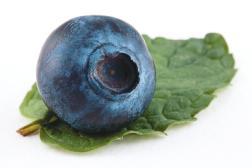

The blueberry gall midge (BGM) is a tiny fly whose larvae feed on vegetative and floral buds. Typically, gall midge will attack young developing floral and leaf buds, which will cause floral buds to abort or fall off the bush, resulting in poor flowering and “fruit set.” With heavy gall midge injury to floral buds, there would be a lighter bloom. Instead of the usual 5 to 6 buds producing several flowers, only 2 may reach maturity, resulting in poor fruit clusters. Blueberry gall midge will also feed on leaf or vegetative buds, leaving young leaves deformed and misshaped. Gall midges lay eggs on warm winter days and at any time during the growing season when the plants are making new flushes of growth. Delegate® (Spinetoram), Exirel® (Cyantraniliprole), diazinon (if labeled for use on your site), Apta® (Tolfenpyrad), and Movento® (Spirotetramat) can be applied for gall midge control between flower bud stages 2 and 3 (Figures 2 and 3). Application should take place when the most mature buds first show slight scale separation. Sprays may need to be repeated during warm spells. Bud scale separation may occur as early as December 15th in north Florida. Among rabbiteye cultivars, 'Premier' is often particularly attractive to the gall midge and is a good sentinel variety to monitor. Gall midge sprays can also suppress a prebloom thrips population. See Table 2 and EDIS publication ENY-997, “Blueberry Gall Midge on Southern Highbush Blueberry in Florida” (https:// edis.ifas.ufl.edu/publication/IN1239).
continued on page 14
12 | The Blueberry News FloridaBlueberryGrowers.org



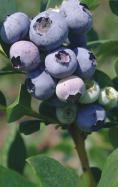


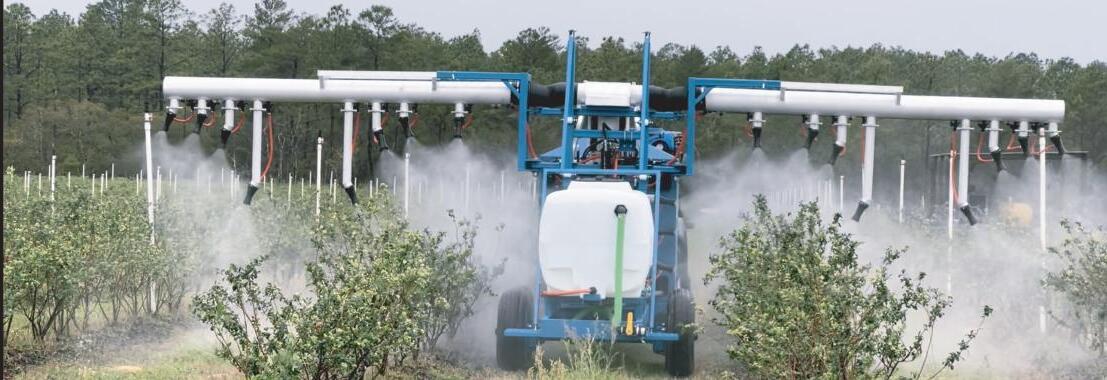

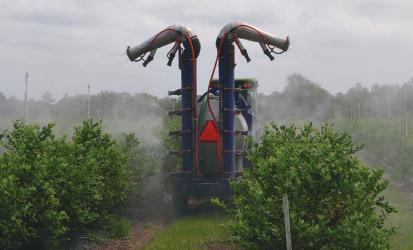



FloridaBlueberryGrowers.org The Blueberry News | 13 Virus indexed plants from tissue culture available in 72ct. cell packs & field ready liners. Agri-Starts, Inc. is a licensed propagator of Florida Foundation Seed Producers, University of Georgia Research Foundation, and University of Arkansas genetics. COME VISIT US ANYTIME! BLUEBERRIES BLACKBERRIES & MORE! AGRISTARTS.COM (407) 889-8055 - info@agristarts.com 1728 Kelly Park Rd. - Apopka, FL 32712 Agristarts Ad 7.5x5.indd 1 9/9/16 5:59 PM Type of Sprayers: • Air Boom • Cannon • Herbicide • Double Cannon • Skid w/Gun • Injection Trailers Models: • Single or tandem axle trailers • Tanks sizes - 100 to 500 gal. • Low profile & narrow designs • Single or double cannons ype 500 A irtec ISprayers nc Ask us about the latest cost share programs
topic of the season
continued from page 12
SUMMER DISEASES AND PESTS, CONT.

CHILLI THRIPS
Chilli thrips are becoming a more pronounced problem in blueberry. Adults feed on blueberries in late spring to early summer shortly after the bushes are pruned. Chilli thrips feed primarily on young leaves, causing leaf bronzing and shoot dieback. During heavy infestation, the edges around younger leaves and stems are eaten and leaf curling occurs. The chilli thrips are smaller than the flower thrips and are approximately 0.04 inches long with dark fringed wings and dark spots across the back of the abdomen. Insecticides that can be used to manage chilli thrips include Delegate® (spinetoram), Assail® (acetamiprid), Sivanto® (flupyradifurone), and Apta® (tolfenpyrad). Conventional products that can be used to manage chilli thrips include Malathion and Sevin® (carbaryl). See Table 2 and EDIS publication ENY-2053, “Chilli Thrips on Blueberries in Florida” (https://edis.ifas.ufl. edu/publication/IN1298).
PREHARVEST FRUIT

DIAPREPES (CITRUS ROOT WEEVIL)
Diaprepes larvae damage blueberry plants by feeding on the roots, including channeling and holes in the roots and feeding injury and girdling near the crown of the plant. Note that this damage is frequently observed some period of time after the larvae begin to feed on the roots, and at that point damage near the crown can appear similar to the effects of root girdling or mechanical wounding and abrasion. These injuries can kill or cause serious decline in blueberry plants and may also create an entry point for Phytophthora, causing a root rot infection. Management and control should target both the adult and larval stages. Control for adults consists of foliar insecticide sprays every 10–14 days when adults are active, beginning when 3 or more adults are found within 1-acre blocks. Larvae can be managed with insecticides either by directly drenching the soil area beneath the plant canopy or by applying them through drip or microjet irrigation systems. In addition, entomopathogenic nematodes may have potential for controlling root weevil larvae in blueberry. See Table 2 and EDIS publication ENY-999, “Diaprepes Root Weevil on Southern Highbush Blueberry in Florida” (https://edis.ifas. ufl.edu/publication/IN1241).
DIEBACK DISEASES OF SOUTHERN HIGHBUSH VARIETIES
Most southern highbush varieties are hedged immediately after harvest. Hedging cuts can serve as an entry point for many stem pathogens. At the end of each day of hedging, application of broad-spectrum fungicides such as Captan mixed with Prophyt® may help reduce infection. Resistance to azoxystrobin has been confirmed for Anthracnose stem dieback in central Florida. Do not use Abound® as a stand-alone application where resistance is known, but tank-mix with Captan or Bravo. See Table 1 and EDIS publication PP347, “Botryosphaeria Stem Blight on Southern Highbush Blueberry in Florida” (https://edis.ifas.ufl.edu/publication/PP347).
FLATHEADED BORERS
Flatheaded borers are a species of beetle in the Chrysobothris genus. The larvae tunnel through plant canes, ultimately killing the cane and acting as an entry point for disease. It is possible that adult beetles are attracted to stressed or damaged blueberry canes, with adult females laying eggs on the injured area, and larvae excavating tunnels just beneath the bark. This is a relatively new pest in blueberry, and research is ongoing regarding its life cycle, monitoring and trapping protocols, and control measures. See Table 2.
FLEA BEETLES
The blueberry flea beetle can cause serious damage during the summer months. Blueberry flea beetle eggs, and possibly adults, overwinter in the leaf litter of blueberry fields. Eggs are very small and orange-yellow in color, and hatching coincides with leaf bud opening. Larvae migrate to the foliage and feed on blossoms and leaf margins, giving the leaves a notched appearance. The larval stage takes 9–20 days to complete. Fully-grown larvae fall to the soil and pupate, with adults emerging approximately 15–28 days later. Adults are less than 0.25 inches in length, oval shaped, and a shiny copper bronze or metallic blue in color, and they chew small holes in the foliage. Adults mate and lay up to 200 eggs per female. The blueberry flea beetle has several generations per year in the southern United States. See Table 2 and EDIS publication ENY-411, “Insect Management in Blueberries in the Eastern United States” (https://journals.flvc.org/edis/article/view/116379).
IMPORTED FIRE ANTS
Ant baits employed in early spring as a broadcast treatment usually eliminate most but not all fire ant mounds within treated areas. Under high ant pressure, treating a second time in the fall provides better fire ant control. Most ant baits are slow acting and require up to 8 weeks to control active mounds because they interfere with reproduction, causing a gradual colony die-off. Extinguish® Professional Fire Ant Bait (0.5% methoprene) is labeled for use on all crop land sites. It is effective but somewhat slower acting than Esteem® Ant Bait (0.5% pyriproxyfen). In order for the bait to be effective, active ant foraging is essential. Worker ants must be attracted to baits so that they will carry the baits back to their colonies. Ideally, temperatures should be warm and sunny. Ant baits work best when the soil is moist but not wet. Avoid applying ant baits when conditions are expected to be cold, overcast, rainy, or very hot. Individual mound treatments are most effective when used as needed for the occasional colony that survives broadcast treatments. Mound treatments using insecticide baits should be applied in a circle 3–4 feet from the mound. Baits should not be placed directly on top of mounds so that mounds remain undisturbed. The colony will move the queen to safety if mounds are disturbed. See Table 2.
continued on page 16
14 | The Blueberry News FloridaBlueberryGrowers.org
Growers take several steps to try to ensure the greatest likelihood of return on their investment when planting blueberries. Site preparation sets the tone for years to come, and if done properly, it can minimize certain risks ranging from cold temperature injury to Phytophthora root rot. Selecting resistant varieties, choosing between tissue culture and rooted cuttings, and picking a nursery to place the order with are also important factors. In this article, we will focus on what to look for in producing and selecting healthy plants that can give you a leg up from the start. We will review how to recognize some of the problems





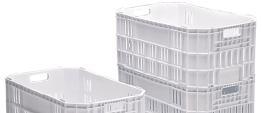



FloridaBlueberryGrowers.org The Blueberry News | 15 continued on page 27
Starts
How to Spot Common Problems Early to Ensure a Healthy Start for the crop Plastic Rentals, Logistic & Management Solutions ■ Daily Bin Rental On-Demand — No Minimum Quantity or Timeframe ■ Citrus Bins, Blueberry Lugs, Peach Tote Rentals ■ Bin Repairs ■ Recycle Program Jerry Cummings 863-651-5596 jcummings@palogix.com www.palogix.com
It
at the Nursery
Figure 1. Phytophthora root rot symptoms.
Credits: Phil Harmon
topic of the season
continued from page 14
SUMMER DISEASES AND PESTS, CONT.


PHYTOPHTHORA ROOT ROT
Phytophthora root rot (PRR) is considered the most serious soilborne disease that affects southern highbush blueberries (SHB). Some SHB cultivars are considered tolerant and others highly susceptible, while rabbiteye cultivars are less affected by the disease. PRR is caused by the oomycete pathogen Phytophthora cinnamomi. Common aboveground symptoms associated with Phytophthora infections are reductions in plant vigor and premature fall discoloration. Symptoms at ground level and belowground include crown and root rots. Disease on susceptible hosts occurs when certain environmental conditions (primarily a saturated root zone and root wounding) trigger Phytophthora reproduction, infection and symptom development. PRR is typically more severe in low and poorly drained areas of a farm. The pathogen causes root discoloration (dark brown to black, instead of the normal cinnamon brown) and decay. Advanced stages of infection cause plant stunting, wilting, an abnormal or reduced root system, root rot, and plant dieback. Leaf discoloration also typically occurs, including yellowing, reddening with or without marginal burn, abnormal growth of new leaves, and defoliation. Plants affected by PRR may also be more susceptible to other dieback diseases including stem blight. Fungicides with the active ingredient mefenoxam, such as Ridomil Gold SL, are recommended where PRR occurs and are applied twice yearly (typically in January and June) through drip irrigation or as a band application directly to the bed. In addition to the phenylamide fungicide mefenoxam, which is applied to the soil, Aliette (Fosetyl-Al 80%) and numerous phosphorous acid products, referred to as “phites” or phosphonates, provide some control when applied as summer foliar sprays. See Table 1.
SCALE
Scale insects injure blueberries by sucking plant sap, inserting their mouthparts into a plant and remaining immobile throughout their lives. Signs of infestation are leaf yellowing (chlorosis), defoliation, fruit drop, sooty mold, branch dieback, or plant death. Soft scales, Coccidae, secrete a waxy covering over the body. They also secrete a large amount of sugary waste (honeydew) resulting in sooty mold, which can interfere with photosynthesis and slow plant growth. Of the soft scales, Indian Wax scale, Ceroplastes ceriferus (Fabricius), is the most prolific on blueberries in Florida. See Table 2 and EDIS publication ENY-411, “Insect Management in Blueberries in the Eastern United States” (https://journals.flvc.org/edis/ article/view/116379).
SPIDER MITES
The southern red mite is the key spider mite pest attacking blueberry plants in Florida. Southern red mites primarily infest the lower side of the leaf, giving the leaf a bronzing appearance when the population is high. Southern red mites also produce a protective web made of silk over the infested surface to protect them from predators. The underside of leaves should be closely examined with a 10x hand lens for adults, shed skins, and webbing. Tapping foliage onto a sheet of white paper can also be used to find adult mites. A few miticides, including fenazaquin (Magister®), fenpyroximate (Portal®) and acequinocyl (Kanemite®), have recently been labelled for spider mites. See Table 2 and EDIS publication ENY-1006, “Mite Pests of Southern Highbush Blueberry in Florida” (https://edis.ifas.ufl.edu/publication/IN1284).
WHITE GRUBS (GRUBS OF ASIATIC GARDEN BEETLE, EUROPEAN AND MASKED CHAFER, AND ORIENTAL BEETLE)
White grubs are the larval form of certain beetle species, such as the masked chafer. They feed on blueberry roots, and damaged plants have the appearance of drought stress. It may take a number of years for larvae numbers to increase to a damaging level, although feeding injury on young plants can quickly result in symptoms and plant death. Masked chafer larvae are up to one inch long, with whitish bodies and brown head and legs. See Table 2.
YELLOW-NECKED CATERPILLAR
Yellow-necked caterpillars feed on the foliage of blueberry plants. Their bodies are covered with long, fine whitish hairs. The head is black, the area behind the head is yellow, and the body is covered with fine white hairs. Feeding by newly hatched caterpillars can skeletonize the foliage, leaving only the large leaf veins. In significant infestations, plant defoliation can occur. This can be minimized by pruning out infested stems. See Table 2. See UF EDIS Publication HS1156, 2022 Florida Blueberry Integrated Pest Management Guide (https://edis.ifas.ufl.edu/publication/HS380) and the UF/ IFAS Blueberry Growers Guide app.
continued on page 18
16 | The Blueberry News FloridaBlueberryGrowers.org
Summer Highbush Blueberry Management Items
______
CREDIT
by DOUG PHILLIPS, UF/IFAS Blueberry Extension Coordinator
Remember to take a look at the UF/IFAS Blueberry Growers Guide phone app (now available in both English and Spanish) for field scouting tools, as well as information on all of the UF southern highbush blueberry cultivars.
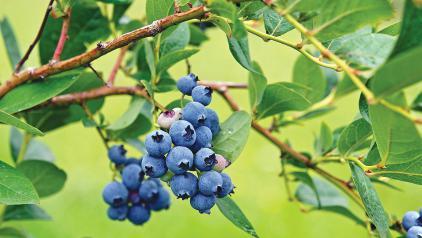
iOS: https://apps.apple.com/ us/app/uf-blueberry-growersguide/id1535258711
Android: https://play.google.com/ store/apps/details?id=co.austn. ss.blueberry











Disease
Insect Pests
Leaf
Tissue Samples
Weeds
The table below lists suggested blueberry management items for July through September. Suggested management items for the entire calendar year are available in an EDIS publication, Calendar for Southern Highbush Blueberry Management in Florida (https://edis.ifas.ufl.edu/publication/HS1363). Specific disease, insect, and weed controls are listed in the 2022 Florida Blueberry IPM Guide (https://edis.ifas.ufl.edu/publication/ HS380), as well as in subject-specific publications referenced below. Also, a list of all UF EDIS blueberry publications can be found at www.blueberrybreeding.com/blog, along with a summary description and link to each.
JULY - SEPTEMBER
Scout for algal stem blotch. See UF EDIS Publication PP344, Algal Stem Blotch in Southern Highbush Blueberry in Florida (http://edis.ifas.ufl.edu/pdffiles/PP/PP34400. pdf). Monitor and manage leaf diseases. See UF EDIS Publication PP348, Florida Blueberry Leaf Disease Guide (https://edis.ifas.ufl.edu/pdffiles/PP/PP34800.pdf). On farms managing bacterial wilt, continue monthly through-irrigation or banded bed applications of a phosphorous acid product. See UF EDIS Publication PP332, Bacterial Wilt of Southern Highbush Blueberry Caused by Ralstonia solanacearum (https://edis.ifas. ufl.edu/pdffiles/PP/PP33200.pdf).
Scout for flea beetles, larval citrus root weevil (by pulling out dead or dying plants and examining the roots and surrounding soil/bark), larval flatheaded borer, chilli thrips, and southern red mites and apply suggested control measures if present. See UF EDIS Publications ENY999, Diaprepes Root Weevil on Southern Highbush Blueberry in Florida (https://edis.ifas.ufl.edu/pdffiles/IN/IN124100.pdf), ENY2053, Chilli Thrips on Blueberries in Florida (https://edis.ifas.ufl.edu/publication/IN1298), and ENY1006, Mite Pests of Southern Highbush Blueberry in Florida (https://edis.ifas.ufl.edu/pdffiles/IN/ IN128400.pdf).
July - Leaves should be collected for tissue nutrient analysis if not done during June. Select samples from fully expanded leaves in the middle of a recent summer growth flush.
July - Apply post-emergence herbicide if weeds are at densities that hinder bush growth.
August - Apply pre-emergence herbicide if summer rainfall has been heavy. Apply post-emergence herbicide if weeds are at densities that hinder bush growth.
September - Apply a pre-emergence herbicide for cool-season weeds (tank mix with a post-emergence herbicide if weeds are at a density that hinders bush growth).
FloridaBlueberryGrowers.org The Blueberry News | 17
topic of the season
continued from page 16
TABLE 1. DISEASE MANAGEMENT OPTIONS
Make applications after harvest on a monthly interval following bacterial canker use instructions. Ensure good cane coverage and canopy penetration. Do not mix with Aliette®, any phosphite fungicide, or any acidifying agents. Do not exceed 28 lb per acre per year. Copper products provide preventive management of algal stem blotch only.
Subsequent applications can be made at 14-day intervals. Consider tank mixing with Captan or Bravo. When hedging is conducted immediately following harvest, this is a good time to consider an application. Do not exceed 1.44 qt per acre per season. Do not apply more than two sequential applications of Abound® before switching to a fungicide with another mode of action.
18.5–23 oz ++++ 12 h 0 days No more than two sequential applications of Pristine® should be made before alternating with fungicides that have a different mode of action. Do not apply more than four applications of Pristine® per acre per crop year.
oz +++ 12 h 30 days
Do not make more than four applications or apply more than 8 oz of Indar® 75 WSP (0.38 lb active) per acre per year. Indar® 75 WSP belongs to the sterol demethylation inhibitor (DMI) class of fungicides. Alternation with fungicides of different classes is recommended.
Metconazole (Quash®) 2.5 oz +++ 12 h 7 days
Propiconazole ( Tilt®)
Prothioconazole (Proline® 480 SC)
Chlorothalonil (Bravo Weather Stik®)
Cyprodinil + fludioxonil (Switch® 62.5WG)
Fluopyram + pyrimethanil (Luna Tranquility®)
Do not make more than three applications per acre per crop year. Alternate with a fungicide with another mode of action.
Many formulations and products that contain copper are labeled for use on blueberry at various rates and application intervals. Carefully follow all label instructions for any product to avoid phytotoxicity. Algal stem blotch is not likely to specifically appear on the label, but these products can be used as long as the crop and site is on the label. Anthracnose, septoria, target spot, and rust leaf diseases

6.0 fl oz +++ 24 h 30 days Tilt®, another DMI fungicide, may be applied by ground or aerial application (see label). Do not apply more than 30 fl oz per acre per season. Tilt® is more effective when it dries ahead of a rain.
5.7 fl oz ++++ 12 h 7 days Make up to 2 applications per year on a 7–10 day schedule.
3–4 pt ++++ 12 h (with restrictions) 6.5 days (w/o)
42 days Apply only as a postharvest fungicide for Septoria and rust. Do not combine with other pesticides, surfactants, or fertilizers.
11–14 oz +++ 12 h 0 days Applications can be made at 7-to- 10-day intervals when conditions warrant. Do not apply more than 56 oz of product per acre per year. Make no more than two sequential applications before using another fungicide with a different mode of action.
16–27 fl oz ? 12 h 0 days Do not apply more than 54.7 fl oz per acre per year. Rotate to a different fungicide group after no more than 2 applications. Reapplication interval is 7 to 14 days. No efficacy data for this product are available for blueberry in Florida. Only Luna Tranquility is labeled for blueberry in Florida.
continued on page 22

18 | The Blueberry News FloridaBlueberryGrowers.org
Disease/ Pest Problem Management Options Amount of Formulation per Acre Effectiveness (Least = + to most = +++++) REI (restricted entry interval) PHI (postharvest interval) Comments Algal stem blotch Kocide® 3000 1.75–3.5 lb ++ 48 h 0 days
other
Azoxystrobin (Abound®) 6.2–15.4 fl oz ++++ 4h 0 days
copper products
boscalid (Pristine®)
(Indar® 2F) 2.0
Pyraclostrobin +
Fenbuconazole


FloridaBlueberryGrowers.org 19
field management , continued from page 9
fall. However, this study did not address mature plant uptake and little is currently known about seasonal nitrogen uptake by mature SHB plants in Florida.
As the plants mature, the goal of fertilization is to achieve a good balance between vegetative and reproductive growth to help obtain high fruit yield and quality. The number of fertilizer applications per year in Florida will typically be greater than in other production areas due to long growing seasons, soils/media with poor nutrientretention characteristics, and abundant rainfall. Many variables impact the rate and frequency of fertilizer applications, including planting density, current plant needs, type and condition of growing media, season, and levels of precipitation and irrigation. It can be difficult to accurately determine a plant’s need for nitrogen fertilizer because a portion of the nitrogen absorbed by the plant in one year can be retained for use in the following year. Also, some growers decrease the amount of nitrogen applied during the period when fruit is ripening. Decisions on fertilizer application should be made based on soil and leaf nutrient analysis (discussed below), levels of plant growth and development, environmental conditions, and grower experience.
There is currently no published data on fertilizer applications for SHB grown in an evergreen production system, although this research is beginning. One of the primary differences from a deciduous system is that some level of fertilization must continue from October through December (when many growers in deciduous systems do not fertilize) to sustain the foliage on the plants through the following spring harvest.
Leaf and soil analyses can be used to evaluate and modify fertilizer programs. Leaf analysis can be useful to assist growers in developing and adjusting fertilizer programs and show longer term nutritional trends. Leaf samples are usually collected immediately after fruit harvest before summer pruning, or from midsummer flush leaves. Mineral element levels for highbush blueberry are presented in Table 1. Soil samples should be collected from new fields before planting to de-
termine if adjustments to soil pH, organic matter, or nutrients are needed. Soils tests can be used regularly for established plantings to track changes in pH, salinity, and nutrient content. To obtain meaningful results for leaf and soil analyses, it is important to follow accepted sampling procedures which can be obtained from the UF/ IFAS Soil Testing Laboratory (http://soilslab. ifas.ufl. edu/ESTL%20 Tests.asp) and UF/IFAS Extension offices.
Literature Cited and Further reading
Krewer, G. and J. Ruter. 2012. Fertilizing highbush blueberries in pine bark beds. University of Georgia Cooperative Extension Service. Bulletin 1291. https://secure.caes. uga.edu/extension/publications/files/pdf/B%201291_3.PDF
Munoz-Carpena, R. 2021. Field devices for monitoring soil water content. University of Florida Cooperative Extension Service. Publication BUL343. https://edis.ifas.ufl.edu/ pdf%5CAE%5CAE26600.pdf

Phillips, D. A. and J.G. Williamson. 2020. Nutrition and Fertilizer Practices for Southern Highbush Blueberry in Florida. University of Florida Cooperative Extension Service. Pub. HS1356. https://edis.ifas.ufl.edu/pdf/HS/HS135600.pdf
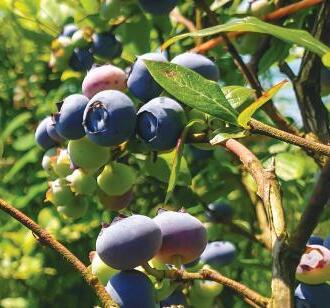
Phillips, D. A. and J.G. Williamson. 2021. Irrigation Practices for Southern Highbush Blueberry. University of Florida, Cooperative Extension Service. Pub. HS1432. https://edis. ifas.ufl.edu/pdf/HS/HS1432/HS1432-Dx4nsu6ek6.pdf
Williamson, J.G., L. Mejia, B. Fergiuson, P. Miller and D.Z. Haman. 2015. Seasonal water Use of Southern Highbush Blueberry Plants in a Subtropical Climate. HortTechnology. 25: 185 – 191. https://journals.ashs.org/horttech/view/journals/ horttech/25/2/article-p185.xml
20 | The Blueberry News FloridaBlueberryGrowers.org _ _____ CREDIT
JEFF WILLIAMSON, Horticultural Sciences Department, UF & DOUG PHILLIPS, UF/IFAS Blueberry Extension Coordinator

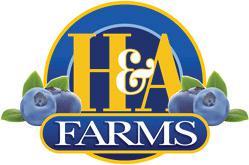

FloridaBlueberryGrowers.org The Blueberry News | 21 Contact Jack Green, Blue Labor, LLC. jackgreen4@icloud.com 863-397-9471 • Mulch sales • Container sales • Farm consulting Pine Bark For Sale Blueberry Growers Only Call Diego X. Vargas at 407-625-6436 or email diego.vargas@handafarms.com Blueprint for an Amazing Agriculture Website
topic of the season
continued from page 18
TABLE 1. DISEASE MANAGEMENT OPTIONS, CONT.
For bacterial wilt, the product must be soil-applied. Follow label instructions for chemigation or directed soil application with light irrigation. Reapplication interval is 3 to 28 days. Make applications postharvest through end of summer.
Apply immediately after postharvest hedging.
Mefenoxam (Ridomil Gold® SL)
3.6 pt ++++ 48 h 0 days
Apply Aliette® as a foliar spray for Phytophthora and Pythium root rots and Septoria leaf spot. Subsequent applications can be made at 14-to-21-day intervals. Two or three fungicide applications following harvest are generally sufficient to prevent major outbreaks of Septoria leaf spot. Assuming that hedging is conducted immediately following harvest, this is a good time to consider an application. Do not exceed four applications per acre per year.
Do not tank mix with copper and foliar fertilizers and do not apply in acidic water or add acidifying agents, because these practices could damage fruit or foliage. When tank-mixing this product with others, test the mix on a small area to make sure that phytotoxicity does not occur.


Established plantings: Apply 1/4 pt/1000 linear feet of row (3.6 pt per acre broadcast basis) in a 3-foot band over the row. One application prior to bloom and one additional application postharvest, approximately 6 months later. New plantings: Apply 3.6 pt per acre (broadcast rate) at or after planting. An 18-inch band over the row is recommended. Do not apply more than 0.9 gal per acre broadcast during the 12 months before plants bear harvestable fruit, or illegal residues may result. For both new and established plantings, one additional application may be made to coincide with periods most favorable for root rot development.
Potassium phosphite (Prophyt®)
Oxythiopiprolin (Orondis® Gold 200)
Oxythiopiprolin, Mefenoxam (Orondis® Gold)
4 pt ++++ 4h 0 days Apply as a foliar spray for Phytophthora and Pythium. Also effective against Septoria and anthracnose leaf spots. Do not tank mix with copper and foliar fertilizers and do not apply in acidic water or add acidifying agents, because these practices could damage fruit or foliage. When tankmixing this product with others, test the mix on a small area to make sure that phytotoxicity does not occur.
4.8 to 9.6 fl oz ? 4h 1 day Apply as a soil drench, as a soil-directed spray, or through irrigation system in spring before plants begin to grow, with a follow-up application postharvest prior to the rainy season.
28 to 55 fl oz ? 48 h 1 day Apply as a soil drench, as a soil-directed spray, or through irrigation system in spring before plants begin to grow, with a follow-up application postharvest prior to the rainy season.
continued on page 24
22 | The Blueberry News FloridaBlueberryGrowers.org
Disease/ Pest Problem Management Options Amount of Formulation per Acre Effectiveness (Least = + to most = +++++) REI (restricted entry interval) PHI (postharvest interval) Comments Bacterial wilt Phosphorous acid soil application (K-Phite) 2-4 qt +++ 4h 0 days
Dieback diseases (posthedging) Captan mixed with a phosphorous acid product (Captan 50WP + Prophyt® 5 lb + 4 pt +++ 48 h 0 days
Phytophthora root rot Fosetyl-Al (Aliette® WDG) 5 lb +++ 12 h 12 h
Healthy Soil, Healthy Crops: How to Make Soil Health
A Priority
Healthy soil improves crop health and yield, including the ability to withstand weather and fight pests and disease. Improve soil health above and below the surface.
Soil is the foundation of crops, but does it really make a difference for overall crop yield and health?
Healthy Soil Improves Crops
Although you can’t see what’s happening beneath the soil, it makes all the difference when it comes to your crops. Healthy soil will affect the level to which crops can sustain the life cycles of plants, animals, and humans. Soil also determines the water and air quality throughout the environment for the surrounding habitat of humans and wildlife.
If you invest in the health of your soil, you’ll increase the capacity of crops to withstand variability in weather conditions, including heavy precipitation or drought because healthy soil holds nutrients and water and increases root strength to resist weather patterns. Strong roots support the plant, improve water and nutrient uptake, fight pests and diseases below the surface, and develop stronger crops for improved crop yield.
Assess Your Soil’s Health
The imperative aspects of soil health are nutrient provision and cycling, protection from pathogens and pests, water intake, and reducing soil erosion. Physical soil indicators include aggregate stability, topsoil depth, soil density, and more, and the main chemical factors are pH and soil nutrients important for plant growth.
Biological soil health is vital since it affects the microbial makeup of the soil, organic matter, pests like nematodes, and with other diseases that thrive under the ground and affect growing crops, determining crop health and yield.
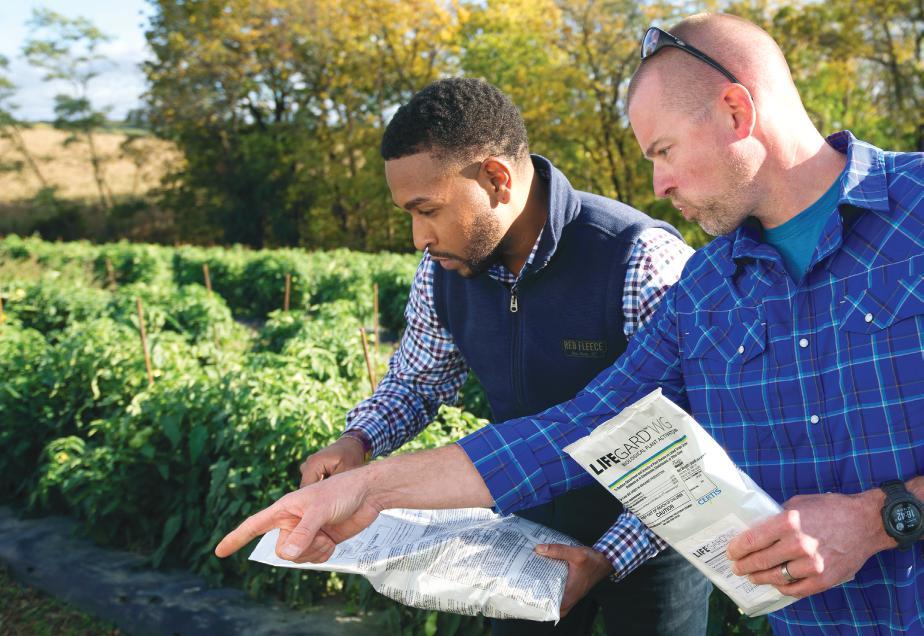
Best Practices to Improve Soil Health
Even small steps can make a difference in the outcome of crops as you implement more sustainable practices to improve soil health.
• Improve Soil Erosion Control

Many crops leave much of the ground uncovered, so cover provide a canopy on the soil and improve soil properties to store nutrients for future seasons. Highly tilled soil also increases erosion and loses a large amount of carbon, resulting in decreased root health and crop yield, so implement erosion control methods by reducing tillage, adding grass waterways, buffer strips, and more.
• Prevent Pests and Diseases
Putting new practices into place will improve soil health, but the existing threat of nematodes and diseases beneath the soil will remain. Evaluate with soil testing to know what pests live in the soil and take ongoing preventive measures to ensure blueberry crops stay safe.
The biggest problem with under-the-surface pests and diseases is that they could destroy crops before you realize there’s a problem, so use a biofungicide soil application to protect from diseases and apply a nematicide to control lurking plant-parasitic nematodes.
Promote healthier roots and increased yield with nature’s defense against yield-robbing nematodes at all life stages, suitable for use in organic and conventional crops.
Learn more about MeloCon® LC.
topic of the season
continued from page 22
TABLE 2. INSECT AND MITE PEST MANAGEMENT OPTIONS
Bacillus thuringiensis [BT] (DiPel® DF)
lb
4–8 fl oz
4.8–16 oz
4.8–9.6 fl oz
Fenazaquin (Magister® SC)
Blueberry bud mite
24–36
++++ 4h
++++
++++
Fenpyroximate (Portal®) 2 pt +++ 12 h 1 day Growers can make two applications per year.
Horticultural oil (JMS Stylet-Oil®) 3–6 qt/100 gal ++ 4h 0 days Blueberry bud mite cannot be readily seen, and by the time symptoms are observed in the spring, the mites are too deep for effective treatment. Avoid using this product if the temperature is above 85°F.


++ 4h 0
days Avoid using this product if the temperature is above 85°F.
Spirotetramat
(Delegate® WG)
Cyantraniliprole (Exirel®) 13.5–20.5 fl oz +++ 12 h 3 days Do not apply within 4 days of bloom. Minimum application interval between treatments is 5 days.
Spinosad (Entrust®) Labeled for organic use
1.25–2
Malathion (Malathion 57 EC) 2 pt +++ 12 h 1 day Malathion has low toxicity to bees and beneficial insects.
Diazinon (Diazinon AG 500) 1 pt +++ 5 days 7 days Do not apply within 4 days of bloom.
Tolfenpyrad (Apta®) 27 fl oz/acre ++ 12 h 3 days Allow 14 days between applications.
continued on page 26
24 | The Blueberry News FloridaBlueberryGrowers.org
Disease/ Pest Problem Management Options Amount of Formulation per Acre Effectiveness (Least = + to most = +++++) REI (restricted entry interval) PHI (postharvest interval)
Comments
0.5–1.0
Azalea caterpillar ++ 4h 0
days DiPel® is an effective microbial insecticide. However, it should be applied to small, early-stage caterpillars.
Tebufenozide (Confirm® 2F)
14
days Confirm® is very effective if applied to small, early-stage caterpillars.
Esfenvalerate (Asana® 0.66 EC)
12 h
14 days Esfenvalerate should be used as a salvage treatment for large caterpillars. It is very effective, but if used often it encourages scale and mite buildup.
Esfenvalerate (Adjourn® 0.66 EC)
12 h 14 days
Some users may be allergic to Adjourn®; discontinue use if skin or eyes become inflamed.
fl oz +++ 12 h 7 days Apply in at least 50 gallons of water per acre. Use higher rates for heavier mite pressure. Do not make more than one application per year.
Horticultural oil (Stoller Golden Pest Spray Oil) 2 gal (low volume) application or 2 gal/100 gal (dilute spray)
5–6 fl oz ++++ 12 h
Spinetoram
3–6 oz +++ 4h
Blueberry gall midge
(Movento®)
7 days Do not apply more than 25 fl oz per acre per season.
3
days Do not apply more than 19.5 oz of Delegate or 0.3 lb a.i. spinetoram per acre per season. Delegate® WG is toxic to bees until 3 h after application when it is thoroughly dry. Acetamiprid (Assail® 30SG) 4.5–5.3 oz +++ 12 h 1 day Do not apply within 4 days of bloom.
oz +++ 4h 3 days Entrust® is toxic to bees until it is thoroughly dry (3 hours), but thereafter it is relatively nontoxic to bees. Entrust® should be applied in early morning or late evening during bloom.
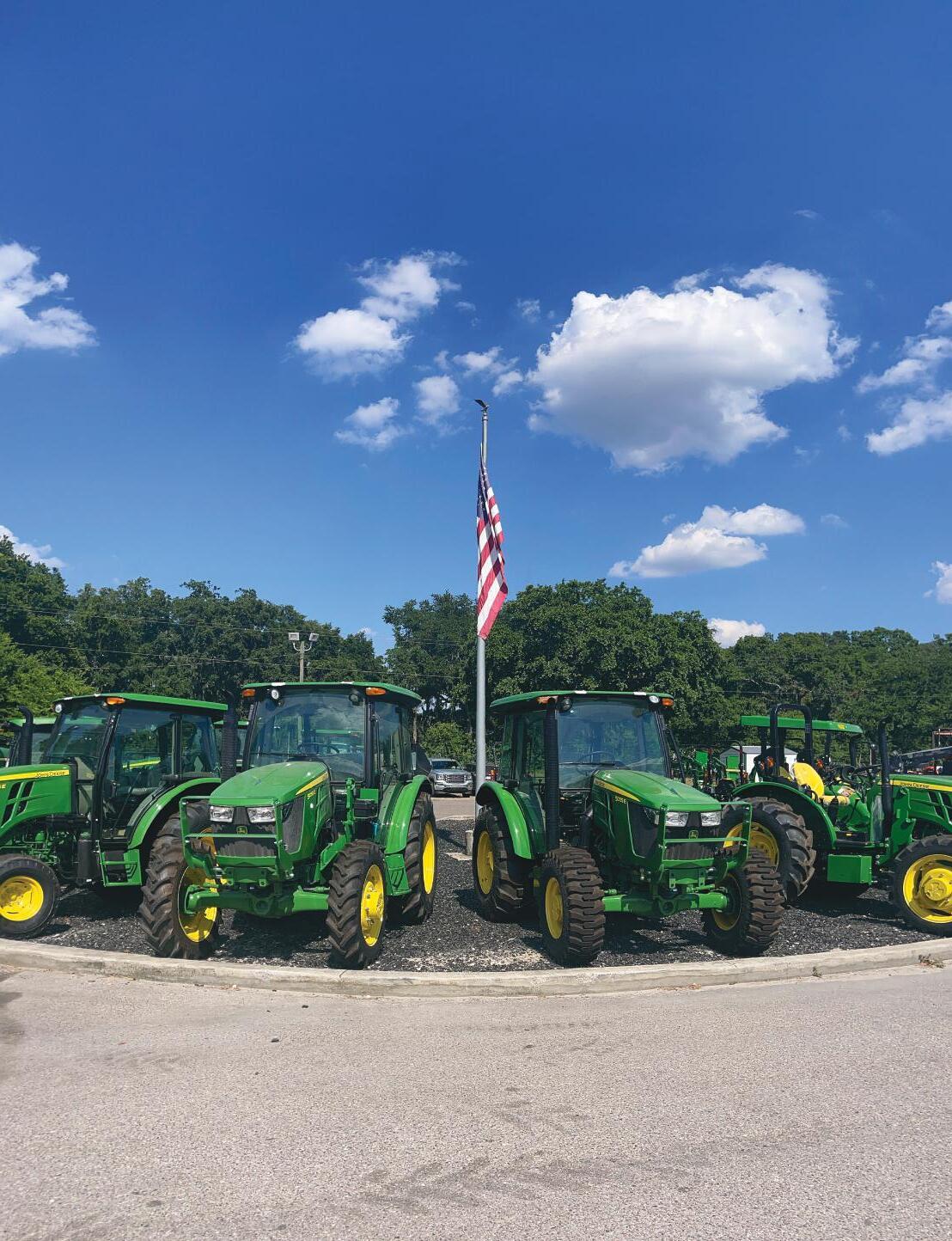

WE ARE HERE FOR YOU with 18 locations in Florida and always online at www. EFE1963.com
topic of the season
continued from page 24
TABLE 2. INSECT AND MITE PEST MANAGEMENT OPTIONS, CONT.
Chilli thrips
Diaprepes (Citrus root weevil)
Spinetoram (Delegate® WG)
pt ++ 12 h 1 day Malathion should be applied in the early morning or late evening to reduce the disruption of beneficial insects.
oz +++ 4h 3 days Delegate® WG may be applied as needed. Delegate® WG should be applied in the early morning. It is toxic to bees in the surrounding areas for the first 3 hours after application. Acetamiprid (Assail® 30SG) 2.4 oz +++ 12 h 1 day Do not make more than four applications per season. Toxic to bees until spray is dry (approximately 3 hours). Malathion (Malathion 57 EC)
(Entrust®) (labeled for organic use)

Flupyradifurone (Sivanto® 200 SL)
oz +++ 4h 3 days It is toxic to bees in the surrounding areas for the first 3 hours after application.
2–4 fl oz/acre +++ 4h 3 days You should allow a minimum of 7 days between applications. Tolfenpyrad (Apta®)
27.0 fl oz/acre ++++ 12 h 3 days Apply by ground only. Maximum of 3 applications per season or 81 fl oz/acre/season.
Novaluron (Rimon® 0.83EC) 20–30 fl oz/ acre ++ 12 h 8 days
Bifenthrin (Brigade® 2 EC) 10–16 oz/acre +++ 12 h 1 day Foliar spray for control of adults.
Fenpropathrin (Danitol® 2.4 EC)
Thiamethoxam (Actara®)
Thiamethoxam (Platinum®)
8–10 fl oz/acre +++ 24 h 3 days Foliar spray for control of adults.
3–4 oz +++ 12 h 3 days Foliar spray for control of adults. Actara® and Platinum® are neonicotinoids and should not follow each other in a rotation program.
5–12 fl oz +++ 12 h 75 days
Bifenthrin (Brigade® 2 EC) 10–16 oz ++++ 12 h Do not apply as a soil drench during harvest
For larval control by directly drenching the soil area beneath the plant canopy or by applying through drip or microjet irrigation systems. Actara® and Platinum® are neonicotinoids and should not follow each other in a rotation program.
For larval control by directly drenching the soil area beneath the plant canopy or by applying through drip or microjet irrigation systems. Do not use as a soil drench during harvest.
Fenpropathrin (Danitol® 2.4 EC) 10–16 oz +++ 24 h 3 days For larval control by directly drenching the soil area beneath the plant canopy or by applying through drip or microjet irrigation systems.
Imidacloprid (Admire® Pro) 2.1–2.8 oz +++ 12 h 3 days Should not follow rotation with Platinum®. They are both neonicotinoids.
Flatheaded borer Thiamethoxam (Platinum®) 5–12 fl oz +++ 12 h 75 days For larval control by directly drenching the soil area beneath the plant canopy or by applying through drip or microjet irrigation systems.
Carbaryl (Sevin® 4F) 1–2 lb +++ 12 h 7 days Sevin® is also effective against small to medium-sized caterpillars.

Diazinon (Diazinon AG500) 1 pt/100 gal ++++ 5 days 7 days Diazinon is also effective against small to medium-sized caterpillars.
Flea beetles
Zetacypermethrin (Mustang MaxTM)
4 oz ++++ 12 h 24 h Use a minimum spray volume of 20 gal by ground.
Acetamiprid (Assail® 30SG) 2.4 oz +++ 12 h 1 day Do not make more than four applications per season.
continued on page 34
26 | The Blueberry News FloridaBlueberryGrowers.org
Disease/ Pest Problem Management Options Amount of Formulation per Acre Effectiveness (Least = + to most = +++++) REI (restricted entry interval) PHI (postharvest interval) Comments
Spinosad
6
2
1.25–2
NELSON KIRKLAND, Publisher

Changing Times
IT’S AMAZING TO OBSERVE how inflation, cheap imports, and labor costs are changing the landscape of agriculture across the country regardless of the crop. The swift changes are forcing farmers to think on their feet and quickly adapt in order to stay relevant and in business. Fortunately, these are traits most farmers, especially those right here in Florida, already possess. (I could rattle off a list of all the qualities our growers exhibit, but chances are good you already know them because you’re one of them.)
With challenges ramping up on multiple fronts, more and more Florida blueberry growers are re-evaluating their processes. Perhaps one of the most notable ways growers are trying to survive is by turning to mechanical harvesting, especially at the end of the harvest when market prices have dropped.
The use of mechanical harvesting on a commercial scale is still in the early phases for our state. Some of the kinks still to be worked out with mechanical harvesting include:
• Plant injury
• Fruit bruising
• The harvest of immature fruit
• Fruit drop between harvests
Still, Florida Blueberry Growers Association President Leonard Park, former FBGA President Ryan Atwood, and Kyle Straughn —among others — are helping fellow growers learn the ins and outs as they forge ahead with the newer technology. You can read more about their experiences in mechanical harvesting in the June edition of Central Florida Ag News at centralfloridaagnews.com/ equipped-to-adapt/ or scan the QR code below to read the story.
As growers take the tenuous next step, The Blueberry News and the Florida Blueberry Growers Association are here to help and support!
for the crop , continued from page 15
encountered in the nursery that can lead to lingering issues in the field. These can be difficult to spot for both the nurserymen and the growers purchasing their plants, and despite best efforts and intentions, they occasionally pop up and give headaches for all involved.
It’s important to start with the healthiest plants possible. Why? Benjamin Franklin. Yes, that one; inventor of bifocals, swim fins, and the lightning rod. Did you know he is credited as having first written “an ounce of prevention is worth a pound of cure?” He wrote that in 1734 in a letter about the importance of fire prevention practices (On Protection of Towns by Fire https://founders.archives.gov/documents/Franklin/01-02-02-0002). It’s quite a read, and like much of what he said, it makes good common sense. Not accidentally burning your house down is way easier than rebuilding it after it burns. Or, you know it should be… of course, he also said “well done is better than well said,” Poor Richard’s Almanack, 1737. Alright, I hear you, enough already, let’s review some of those ways not to burn down the house.
Phytophthora Root Rot

Root rot is a general term for a symptom that can be caused by a number of diseases and some abiotic problems alike. When roots rot, they lose integrity and function, meaning they fail to collect and conduct water and nutrients that the plant needs to grow. Phytophthora root rot (PRR) disease occurs due to infection of roots by the water mold, Phytophthora. Water molds are related to fungi, but have a swimming spore stage that requires water in the root zone to find and infect blueberry roots. Extended periods of saturated root zones increase the chances of infection and the severity of the rot that ensues. Once plants become infected, the disease is difficult to get rid of, but the disease is surprisingly easy to prevent in the nursery if a few steps are taken. Once infection does occur, the pathogen continues to produce spores and infect new roots once transferred to the field, ultimately reducing plant growth and vigor. Compared to healthy plants, diseased plants show leaf reddening of nutrient deficiency and stunting above ground (Figure 1, page 15). Root symptoms are visible when you pull plants from pots and compare the color and integrity between diseased and healthy plants. The most notable difference to my eye is the dark brown to black coloration and lack of fine feeder roots of diseased plants compared to fibrous light reddish-cinnamon
continued on page 32
FloridaBlueberryGrowers.org The Blueberry News | 27
interlude publisher, s
Pests & Pollinators
Are We Spraying the Bees Away?
Blueberry growers are faced with the consistent challenge of balancing pest and pollinator management. Fruit production is highly reliant upon insect pollinators. This requires growers to deploy managed pollinators and consider the effects of farm management on pollination. Unfortunately, pollinators are not the only insects that growers must consider. Several damaging insect pests such as thrips, gall midge, and spotted wing drosophila lead to frequent prophylactic treatments of insecticides, some of which occur during the pollination window. Recent research has shown that insecticide applications can have significant non-target effects on pollinators that result in death, reduced foraging rates, changes in bee behavior, and reduced reproductive ability. Many of these studies have assessed season-long impacts of pesticides including several applications. Although this is valuable information, growers also need to know the immediate impacts of a single insecticide application on pollination, including potentially repelling pollinators from flowers. We assessed pollinator activity and pollinator health impacts of a single application of three commonly used insecticide products, Sivanto Prime, Delegate WG, and Assail 70 WP along with an untreated control.
Research activities
In the Spring of 2021, we carried out an experiment to examine the effects of single insecticide applications on pollinator behavior and health. The experiment took place at a large-scale commercial blueberry farm located in Hawthorne, FL. Sixteen large field cages were used with each cage containing one bumble bee (Bombus impatiens) research hive, like those commonly used by growers, and 50 one-gallon Chickadee blueberry plants. In each cage, we observed bumble bee visits to blueberry flowers for at least three days prior to insecticide application and seven days following application. All insecticides were applied at recommended label rates targeting thrips on small blueberry plants. Additionally, all four treatments including the control
were sprayed with the surfactant DyneAmic to ensure effective coverage and to replicate farmer practices. After the estimated 10 days of observation, bumble bee colonies were removed from cages and allowed to forage freely until the end of the blueberry pollination period, at which point they were taken back to the lab for dissection.
Research findings
Bumble bee visits to blueberry flowers were not significantly affected by any of the three single applications of insecticides applied. Immediately following insecticide applications, bumble bee activity increased across all treatments, likely because of the

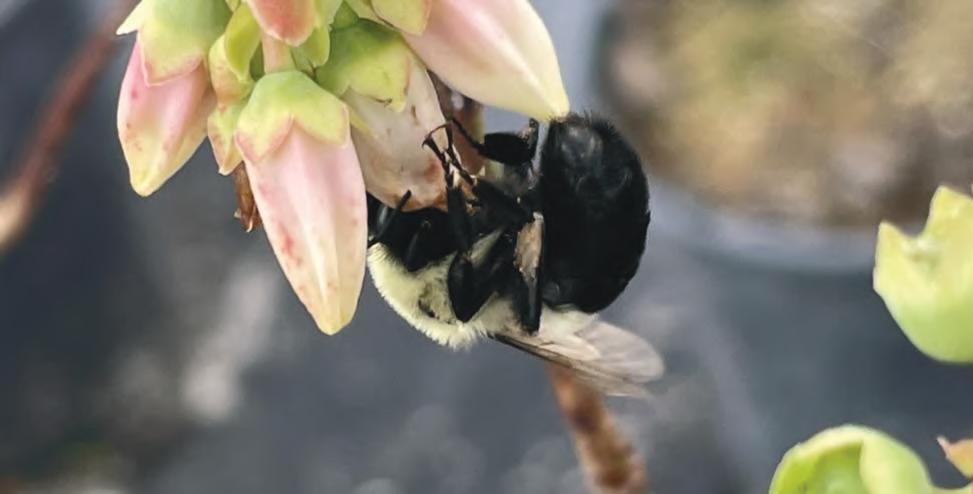
28 | The Blueberry News FloridaBlueberryGrowers.org
research
Image 2. Experimental cages with 50 small blueberry plants and a bumble bee research colony. A total of 32 cage replicates were used in the experiment.
Image 1. A common eastern bumble bee (Bombus impatiens) visits a blueberry flower in the experiment.
Change in bee visitation rates to blueberry flowers
warmer weather later in bloom (Figure 1). However, visitation increased most in the unsprayed control and least in the Assail 70 WG showing a slight negative effect of Assail on pollinator activity (Figure 1). Thus, growers can utilize any of these three insecticides in line with label recommendations and are unlikely to experience significant reductions in pollinator activity but may have small reductions with the use of Assail 70 WG as compared to other products or unsprayed areas.

We also found significantly higher bumble bee death in colonies exposed to Delegate compared to our other three treatments (Figure 2). This is a surprising result as Delegate is currently considered a pollinator-safe insecticide and is commonly recommended for treating pests during the bloom period. However, some studies have found that Delegate is only safe to pollinators on contact but is highly lethal when ingested. Bumble bees may be ingesting lethal quantities of Delegate when it is applied to blueberry plants in bloom despite following label guidelines to reduce pollinator contact.
Conclusions and recommendationsmanagement
Our results indicate that blueberry growers can utilize single applications of any of the three insecticides (Assail, Delegate, Sivanto) without significantly reducing pollinator flower visits, though all insecticides showed slight reductions in activity as
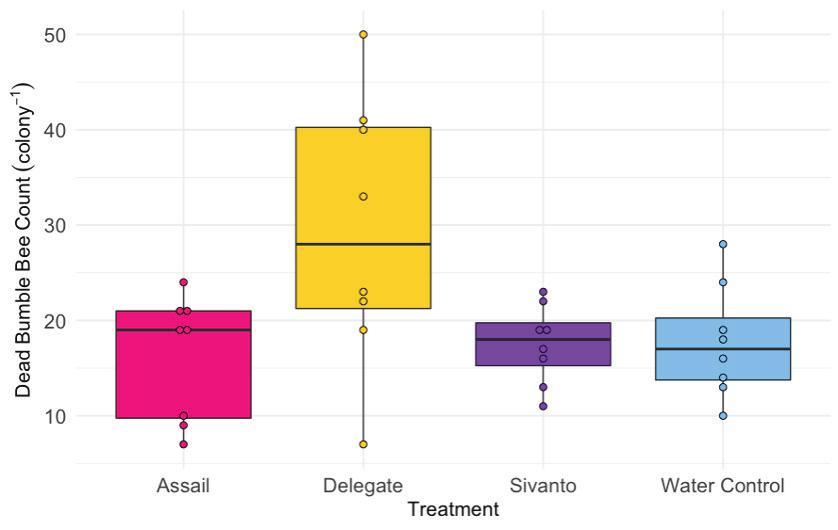
compared to the unsprayed control and Assail had the greatest negative effect on pollinator activity. Based upon results from previous research, repeated or combined use of these insecticides within the bloom period may lead to reductions in pollinator visitation and pollination efficacy that could affect yields. It remains crucial that blueberry growers use IPM practices such as scouting for pests and only apply insecticides when established economic thresholds are met. Reducing prophylactic applications by utilizing IPM practices will allow for fewer applications during the bloom period and reduce the chance of impacting pollinator visitation rates.
Despite being commonly recommended for use during the bloom period, it seems that Delegate needs to be assessed further for its lethal effects on bumble bees and other pollinators. Our results indicate that bumble bees encountered toxic concentrations of Delegate even when mitigation strategies such as evening applications were utilized. It is unclear if these lethal effects would also occur in honey bees and wild native bees, but the consequences of a similar effect could lead to reduced pollination. Based on this result, growers should consider alternative insecticides if application is necessary during the bloom period.
JOHN TERNEST & DR. RACHEL MALLINGER
FloridaBlueberryGrowers.org The Blueberry News | 29
_________ CREDIT
Figure 1
Effect of insecticide application on bee visitation rates measured as change from pre-application to post-application
Figure 2
Dead Bumble Bees per Colony by Treatment
Thrip Threat
Be On the Lookout for Chilli Thrips This Summer

Chilli thrips are a significant pest on southern highbush blueberries in Florida with the potential to cause heavy foliage damage from late spring through early fall. Although there are insecticides with efficacy on chilli thrips, the numbers of applications used and cost of products have become a significant management issue for Florida growers.
“Chilli thrips have emerged as the number one pest threat at Frogmore Fresh,” says Leonard Park, president of the Florida Blueberry Growers Association and farm manager at Frogmore Fresh.

“We start seeing them in spring as soon as young suckers flush and they crank up before we finish harvest in May. Once we hedge, they explode in June if we haven’t already geared up our protection program. We continue fighting them into September, always diligent to scout and respond. Suppression seems the best we can achieve. Some go-to chemicals like Delegate are now losing effectiveness, so we have tried numerous alternatives with no satisfactory solution. As the most costly
pest for our farm, we hope our UF experts and the crop protection industry can find new and better options.” The following is a discussion of this insect pest, along with management suggestions and the results of recent insecticide field trials.
Chilli thrips, (Scirtothrips dorsalis Hood), were first observed in Florida in 1991 and again in 1994, with the first established population reported in October 2005 on roses in Palm Beach County. It was first recorded in blueberries in Hernando, Pasco, and Sumter counties in July 2008. Chilli thrips typically appear during the new flush of foliage growth following post-harvest hedging in late spring to early summer, and prefer feeding on young, tender foliage.
Life Cycle
Adult chilli thrips are only 1-2 mm (<1/16 inch) in length, smaller than flower thrips, with pale yellow bodies, dark fringed wings, and dark brown incomplete abdominal stripes (Figure 1). The lifecycle of chilli thrips (i.e., egg, larva, pupa, and
adult) is short and typically lasts about 18-20 days in favorable environmental conditions. Adult females lay about 60 eggs in their lifetime. Eggs usually hatch in 5-8 days, depending on environmental conditions. There are two larval stages that take approximately 8-10 days to develop, during which they are actively feeding. Pupal stages last for 2-4 days when no feeding occurs. Adults emerging from the pupal stages typically live for 20-25 days.
Plant Injury
Chilli thrips feeding can cause substantial damage to blueberry foliage. Adults and larvae punch holes through epidermis cells and remove the cellular contents of leaf and stem tissues, leading to tissue necrosis and death. Injury symptoms first appear as bronzing along
30 | The Blueberry News FloridaBlueberryGrowers.org bug of the month
Figure 1. Adult chilli thrips. Photo by B. Panthi, UF
Figure 2. Chilli thrips feeding injury. Photo by B. Panthi, UF
leaf veins and petioles, and leaves gradually begin to curl and distort (Figure 2). Heavy infestations can cause leaf defoliation with extensive curling of leaves, reducing photosynthesis and possibly impacting floral bud initiation in cases of significant defoliation. During high infestations chilli thrips may also feed on fruit, causing a mottled appearance.
Monitoring to ensure early detection is important for effective chilli thrips control. Scouting for adults can be performed by observing young leaves with a hand lens (20X), tapping young foliage onto a white sheet of paper or phone screen, or using white or yellow sticky cards.
Chilli thrips can have an irregular distribution within a field with areas of hot spots, so sufficient samples should be collected to provide an accurate estimate of any population in the field. The appearance of bronzing on new flush may be the first indication of the chilli thrips presence in blueberry fields, although at that point there may be significant populations already present.
An integrated pest management (IPM) plan for chilli thrips control includes cultural, biological, and insecticide
controls. Cultural control involves the elimination of weeds and other host plants in and around production fields that can support chilli thrips growth and development. Biological controls include beneficial predators such as Orius insidiosus (minute pirate bug), which feeds on all life stages of thrips, as well as Amblyseius swirskii (predatory mites) and Geocoris spp. (big-eyed bugs), which have shown some effectiveness in controlling chilli thrips.
Application of insecticides is the primary method of managing chilli thrips in blueberry. These include spinetoram (Delegate®), tolfenpyrad (Apta®), novaluron (Rimon®), acetamiprid (Assail®), and flupyradifurone (Sivanto®). Spinosad (Entrust®) can be used in organic production. In a recent field trial, spinetoram and tolfenpyrad were the most effective of the insecticides evaluated. Spinetoram has systemic activity, allowing the chemical to be absorbed into plant tissues relatively quickly. Spinetoram has been shown to be effective in controlling all of the life stages of chilli thrips, including egg when mixed with novaluron, an insect growth regulator which affects egg development.
The University of Florida plans to conduct additional field trials this summer, and several new products will be evaluated. A list of products registered for managing chilli thrips in Florida blueberries along with their active ingredients and insecticide classes are provided in Table 1. Be sure to follow all insecticide label instructions.


For additional details see UF EDIS Publications ENY-2053, Chilli Thrips on Blueberries in Florida (https://edis.ifas.ufl. edu/pdf/IN/IN129800.pdf) and HS1156, 2022 Florida Blueberry Integrated Pest Management Guide https://edis.ifas.ufl. edu/publication/HS380 _________ CREDIT
DR. OSCAR LIBURD, Professor and Program Leader, Fruit and Vegetable Entomology, UF & DOUG PHILLIPS, UF/IFAS Blueberry Extension Coordinator
Table 1. Registered products for managing chilli thrips in Florida blueberries.
FloridaBlueberryGrowers.org The Blueberry News | 31
IRAC code1 Chemical group Active ingredients Registered products 1B Organophosphates Malathion Malathion 57EC Diazinon Diazinon
WBC 3A Pyrethroids Pyrethrins PyGanic EC 5.0, Azera Fenpropathrin Danitol 2.4 EC Bifenthrin Brigade WSB 4A Neonicotinoids Acetamiprid Assail 70WP 4D Butenolides Flupyradifurone Sivanto 200 SL, Prime 5 Spinosyns Spinetoram Delegate WG Spinosad Entrust (for organic use) 15 Benzoylureas Novaluron Rimon 28 Diamides Cyantraniliprole Exirel UN - Azadiractin Aza-Direct, Neemix 4.5% EC UN - Beauvaria bassiana strain GHA BotaniGard ES, Mycotrol ESO UN - Chromobacterium subtsugae strain PRAA4-1 Grandevo UN - Metarhizium anisopliae strain F52v MET52 EC UN - Isaria fumosoroseus Apopka strain 97 PFR-97 20%WDG* 1Insecticide Resistance Action Committee (IRAC) Mode of Action Classification v. 8.2 March 2017. Source (Vegetable Production Handbook of Florida, 2017-18).
50W, AG600
for the crop , continued from page 27
colored healthy blueberry roots. When examining potted plants, I like to pull and shake them moderately to see how much medium falls from the root ball. A healthy root ball will hold onto the medium better than a crumbly and poorly defined root ball.
The Phytophthora pathogen is common in Florida farm soils but is not a common problem in nurseries. Exceptions over the years have frequently involved flooding of beds due to hurricane rains. Steps to prevent the disease in the nursery in addition to ensuring good drainage include the use of raised benches to keep plants up off the soil and out of standing surface water that harbors the Phytophthora pathogen. Fungicides with the active ingredient mefenoxam can be applied in the nursery and offer additional protection. Plant producers that experience flooding should hold affected plants as suspect. Diagnostic testing of any plants with discolored roots will reveal if Phytophthora root rot is playing a role. If found in the nursery, I think the best course of action is to discard plants rather than trying to “cure” the plants. There have been a handful of cases where infection in the nursery occurred, plants were installed, but then suffered poor vigor in the field—ultimately being replaced. Abiotic root rot and root rots caused by minor pathogens not known to cause problems in the field such as Pythium or Rhizoctonia may not be as big of a concern. Plants affected with these minor issues are less likely to suffer after planting, further emphasizing the need for a diagnostic test to determine which root rots are present.
Bacterial Wilt
This disease was recently discovered in blueberries in Florida, but the Ralstonia pathogen that causes it has a long history of causing problems within plant propagation industries. Like Phytophthora, Ralstonia survives
in soil and has the potential to move in surface water into rooting beds and potted plants. Far fewer issues have been brought to my attention with bacterial wilt as compared to Phytophthora root rot. The distribution of Ralstonia within Florida farms is unknown but not expected to be as widespread as Phytophthora. Nurserymen and growers alike should strive to prevent moving this pathogen around on infected plants. Keeping surface water from pooling in propagation beds, avoiding surface water irrigation sources for propagation uses, and using raised beds can help reduce the chances of Ralstonia introduction into nursery stock. Bacterial wilt results in symptoms similar to Phytophthora root rot in that plants lack vigor, show drought stress, dieback, and are generally unthrifty. A field test for bacte-
rial wilt involves looking for bacterial streaming from discolored stems of plants by suspending cut stem sections in water in a clear plastic or glass container. Milky, cloudy ooze will stream from affected stems and settle on the bottom of the container (Figure 2). Suspect cases should be confirmed via a diagnostic test at a UF lab. If positive, additional sampling should be used to identify diseased plants for destruction. The pathogen that causes bacterial wilt is of regulatory concern and detections within a nursery may lead to additional inspection and survey at the discretion of the Florida Department of Agriculture and Consumer Services. This would be particularly true for nurseries shipping plants across state lines and into production areas where bacterial wilt is not known to occur on blueberry (outside Florida).

Algal Stem Blotch
The algal pathogen that causes stem blotch is a slow-growing and difficultto-kill organism once it has established itself in a planting. Copper fungicides can help prevent infection, but once in the plant, there are no good options to stop the progression of the disease. The initial symptoms of algal stem blotch can be difficult to differentiate from minor blemishes and normal bark formation. The red blister-like lesions can be spotted with the use of a good hand lens and will show the red threadlike algal pathogen growing just under the epidermis of the cane. More advanced lesions will start to sporulate showing a felty orange-red fuzz coming from the cane that produces the propagules that can spread the disease to new plant parts and other nearby plants. Growers and nurserymen can inspect canes for blisterlike lesions with this sporulation and send representative samples to a lab for confirmation. Plants identified to have algal stem blotch really shouldn’t be used in the more southern production areas
32 | The Blueberry News FloridaBlueberryGrowers.org
Figure 2. Bacterial streaming from Ralstonia. Photo by Phil Harmon continued on page 38
To place a classified ad please e-mail
MY PAYROLL SOLUTIONS LLC has over 18 years of experience in matching small businesses, Agriculture Companies and harvesters to staffing services and employee leasing companies which provide payroll services with workers comp coverage for our clients and providing assistance with H2A applications. For more information contact Jeff H Futch at 863 835-1130

EQUIPMENT FOR RENT
FOR RENT
7 yard rowmulcher, Great for replenishing bark on Blueberry Farms, PTO drive, 30hp tractor needed. Call 863-604-2526 for rental
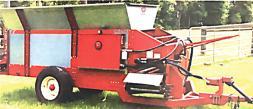
PRODUCTS & SERVICES
AGRI-SOURCE
Producer of Blueberry Pine Bark Products for the Blueberry Industry. 352-351-2700
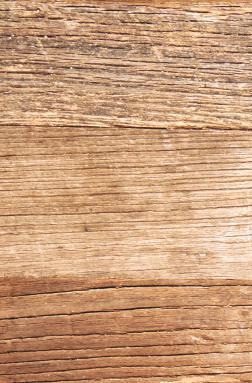
AGRISTARTS
Producers of tissue culture 72ct liners and 21ct field-ready plants. Licensed for all UF selections + more! 407-889-8055
AIRTEC SPRAYERS
Over the Row Blueberry Sprayers
Lower Volumes, Less Drift, Better Coverage. 863-412-6247 AirtecSprayers.com
BIGGER BERRIES LLC
Suppliers for Alzchem and Dormex. Call Ryan Atwood at 1-352-267-3229 or John Strickland at 1-912-520-0220 To learn more visit www.FruitFormity.com
CARDEN & ASSOCIATES, INC.
863-291-3505
Here for the Florida Blueberry Grower…yesterday, today and tomorrow!


CERTIS
Improve soil health above and below the surface. www.certisbio.com
800-250-5024
DUNDEE GROWERS ASSOCIATION
Harvesting, Packing & Marketing services since 1924. (863) 439-1574 / Dun-D.com
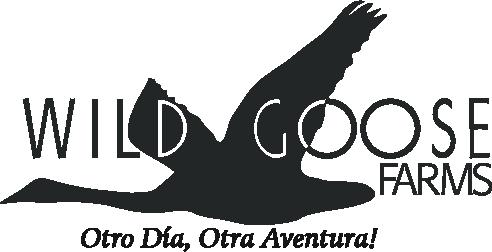
EVERGLADES EQUIPMENT
12 locations in Florida with the Best Lease Program in the Business!
A John Deere Dealer ShopEFE.com
FARM CREDIT OF CENTRAL FL 866-824-5626 Patronage
refunds for Smart Farmers and Country Home Owners. Lower costs!
FARMING INNOVATION LLC
Hedging and Topping of Blueberries, Peaches, and Olives. HunterVickers 863-287-2351 vickershunter@yahoo.com
FIELDS EQUIPMENT CO., a John Deere Authorized Dealer. 3 Locations. Small Dimensions, Big Performance. (863) 967-0602 / FieldsEquip. com
FLORIDA FOUNDATION SEED PRODUCERS, INC.
352-392-9446
Providing Superior Plant Varieties
ISLAND GROVE
352-274-3835
Quality Plants. Superior Service. IslandGroveAgProducts.com
ORCHARD-RITE
performance wind machines are pure and powerful (509) 834-2029 / Orchard-Rite.com
Southern High Bush Plants For Sale. Avanti, Optimus, Colossus, Arcadia, and Sentinel. Liners, Quarts, and Gallons. Quantity Discounts Available and PreOrder Discounts.
For Orders & More Information, Contact Cameron at (407) 401-4434 or email to cameron@ wildgoosefarms.net
PALOGIX INTERNATIONAL
Plastic rentals, logistic & management solutions. Palogix.com
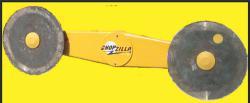
PERFORMANCE NUTRITION
Empower your soil with soil innoculants and protect against stress (732) 888-8000 • pnfertilizers. com
PINE BARK FOR SALE
Blueberry Growers Only, H&A Farms, Call Diego Vargas at 407-625-6436 or email Diego. Vargas@HandAFarms.com

PLANT FOOD SYSTEMS
Advanced Plant Nutrition and Protection. PlantFoodSystems. com
SVN SAUNDERS RALSTON DANTZLER
Blueberry Farm real estate 877-518-5263
FloridaBlueberryGrowers.org The Blueberry News | 33
call (863) 248-7537.
info@centralfloridamediagroup.com or
BUILD YOUR OWN CLASSIFIED CentralFlorida MediaGroup.com
topic of the season
continued from page 26
TABLE 2. INSECT AND MITE PEST MANAGEMENT OPTIONS, CONT.
1
1.5–2.0 lb (2–4
Mound drench. Slowly apply 1 gal of diluted mixture over and 6 inches around each mound. Apply gently to avoid disturbing ants.
Esteem® Ant Bait should be applied during the spring and, if needed, again in the fall. Apply on sunny days when the soil temperature is at least 60°F and the soil is moist. Baits are slow acting but effective. Allow 4 weeks to work. Do not make other imported fire ant treatments for 7–10 days. May need to reapply if heavy, flooding rains occur within 7 days.
Extinguish® Professional Fire Ant Bait (0.5% methoprene) is legal for use on crop land. Caution: Extinguish baits with methoprene plus hydramethylnon are not labeled for use on crop land. Application during the heat of the day or when rain is expected within 6 hours of application will reduce the effectiveness of this product. In areas of heavy infestation, repeat applications may be necessary 10–12 weeks after the initial application.
Spider mites
White grubs (Grubs of Asiatic garden beetle, European and masked chafer, and Oriental beetle)
Yellownecked caterpillars
Apply in at least 50 gallons of water per acre. Use higher rates for heavier mite pressure. Do not make more than one application per year.
Growers can make two applications per year.


day Do not apply this product through the irrigation system. Allow a minimum of 21 days between applications. Horticultural oil
days Avoid using this product if the temperature is above 85°F. Horticultural oil (Stoller Golden
oz
Avoid using this product if the temperature is above 85°F.
h 7 days Soil application. Chemigation into root zone through lowpressure drip, trickle, or microsprinkler. It is important to moisten the soil (1/2–1 inch of water) prior to application or shortly after application.
Foliage-feeding caterpillars become more difficult to control as they mature.
34 | The Blueberry News FloridaBlueberryGrowers.org
Disease/ Pest Problem Management Options Amount of Formulation per Acre Effectiveness (Least = + to most = +++++) REI (restricted entry interval) PHI (postharvest interval) Comments Imported fire ants
(Diazinon AG500)
Diazinon
pt/100 gal ++++ 24 h 7
days
(Esteem®
EC Ant Bait)
Pyriproxyfen
0.86
tbsp/
++++ 12
mound)
h 24 h
Methoprene (Extinguish® Professional Fire Ant Bait 0.5%)
tbsp/
(3–5 tbsp/ mound) +++
1–1.5 lb (3–5
1000 sq ft)
4h 0 days
Scale Diazinon (Diazinon AG500) 1 pt/100 gal +++ 5 days 5 days Pyriproxyfen (Esteem® 0.86 EC) 1.5–2.0 lb +++ 12 h 24 h Mineral oil (JMS Stylet oil) 25–150 gal ++ 4h 12 h Recommended 1–3 gallons per 100 gallons of
temperature is above 85°F. Imidacloprid (Admire® Pro) 10 fl oz +++ 12 h 3 days Foliar application.
water. Avoid using this product if the
Fenazaquin (Magister® SC) 24–36 fl oz ++++ 12 h 7 days
2 pt ++++ 12 h 1
Acequinocyl
15 SC) 31 fl oz +++ 12 h 1
3–6
++ 4h
2
2
++ 4h 0
Fenpyroximate (Portal®)
day
(Kanemite®
(JMS Stylet-Oil®)
qt/100 gal
0
Pest Spray Oil)
gal (low volume) application or
gal/100 gal (dilute spray)
days
10
Imidacloprid (Admire® Pro)
fl
+++ 12
1.5
+++
Malathion (Malathion 57 EC)
pt
12 h 1 day
MEMBERSHIP INFORMATION
To join or renew your membership in the Florida Blueberry Growers Association, mail a check payable to: FLORIDA BLUEBERRY GROWERS ASSOCIATION, INC. P.O. Box 358086 Gainesville, FL 32635



•Grower Member: $150 (Florida & out-of-state growers)
Additional Associate Member/Grower: $50 each
•Allied Member: $200 (equipment and chemical companies, etc.)










Additional Associate Member/Allied: $50 each
•Educational & Research Member: $10 (University and USDA members who do not grow blueberries commercially)
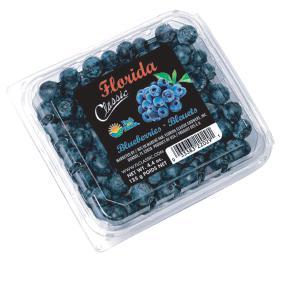



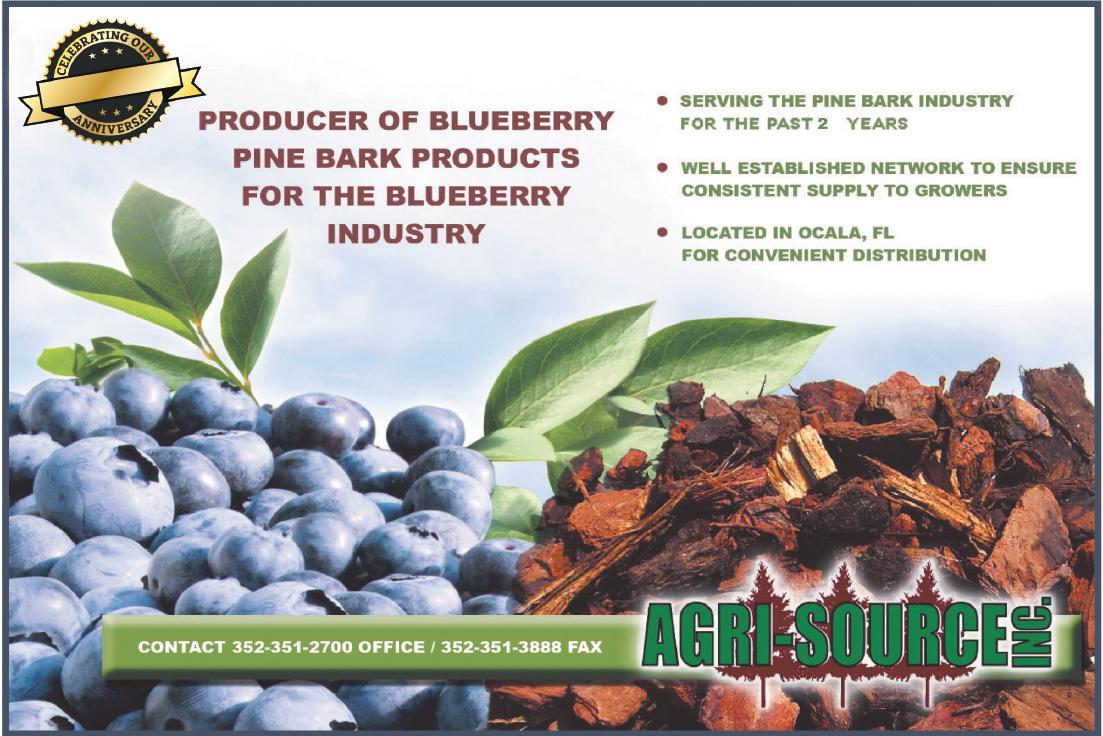
FloridaBlueberryGrowers.org The Blueberry News | 35 CONNECT WITH US • Content Marketing • Niche Publishing • Social Media Management • Content-Focused Website Development • Targeted Marketing • Articles, Whitepapers, E-Books, Reference Guides, Workbooks, and more. centralfloridamediagroup.com (863) 248-7537 info@centralfloridamediagroup.com
are
agricultural
“We
an
services advertising company that helps your business attract clients.” – Nelson Kirkland, founder, Central Florida Media Group
Harvesting. Packing. Marketing. D UN D E E BER RY G R OWER S ASSOCI ATIO N Currently Accepting New Growers Our company is a wholly owned subsidiar y of Dundee Citrus Growers Association which has been in business since 1924. We are a vertically integrated company that offers harvesting, packing and marketing ser vices Our “Florida Classic” brand is a well-recognized and respected label throughout the United States and Canada. Our packing facility is conveniently located one mile East of Highway 27 in Dundee Contact Steven B. Callaham steven.callaham@dun-d.com | 863.287.2636 111 1st Street Nor th, Dundee, FL 33838-1739
Right On Target Monitoring
and Managing
Target Spot in Southern Highbush Blueberry
Target spot, a fungal leaf disease, is caused by the Corynespora cassiicola pathogen. It was first reported in blueberry in the US (on “Jewel” in Central Florida) in 2014. Florida growers have reported significant defoliation due to target spot on many southern highbush blueberry (SHB) cultivars since then.
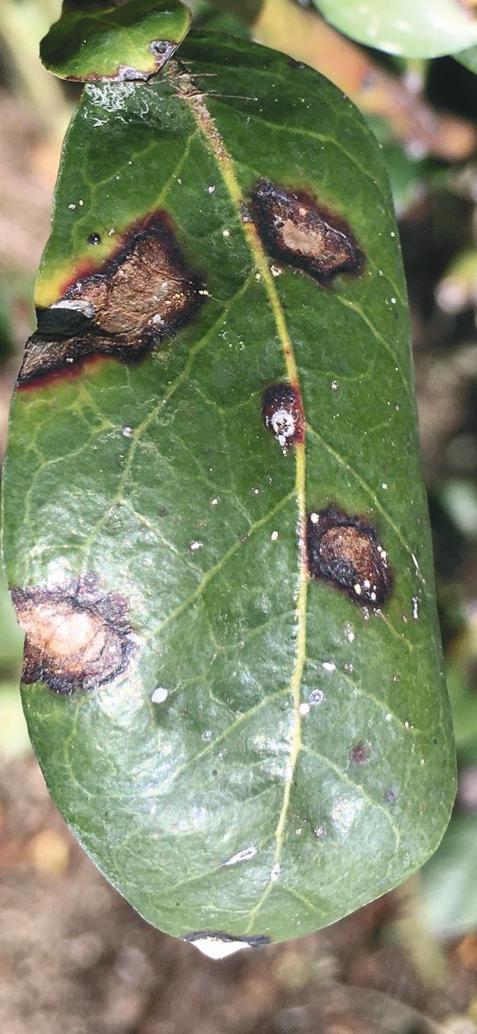
Symptoms
Typical symptoms are angular or irregular reddishbrown lesions, around 1/3- to 3/8-inch in diameter. These lesions can form concentric rings of varying colors as they expand, resulting in a target or bull’s-eye type pattern (Figures 1 and 2). These symptoms can appear similar to early symptoms of anthracnose leaf spot, and both diseases can occur simultaneously on susceptible varieties. However, anthracnose leaf spot lesions can increase to a diameter exceeding 1/2 inch, while target spot lesions tend to remain smaller. Also, defoliation can occur with fewer target spot lesions compared to anthracnose.
Disease Cycle
There is currently limited data on the disease cycle of this pathogen in blueberry. In other crops, C. cassiicola typically overwinters in plant debris or alternate host species. Humid weather, temperatures between 79°F – 84°F, and moderate rainfall are all favorable conditions for the rapid development of
36 | The Blueberry News FloridaBlueberryGrowers.org
grower's thoughts
Figure 1. Target spot symptoms on blueberry leaf. Credits: D. Phillips
disease and pathogen reproduction. In the field, pathogen spores can be spread by wind or water splash, including both rain and overhead irrigation.
Management
Growers have reported that after the onset of symptoms, target spot is difficult to manage. Protective fungicide applications where the disease is known to occur or frequent and careful scouting for initial disease symptoms are recommended. Good cultural practices to help reduce disease severity include limiting leaf wetness duration and high humidity within the plant canopy. This can be done by minimizing overhead irrigation, regular pruning to open plant canopies, and weed management in beds and row middles to increase airflow to the plant.
Many of the fungicides used to manage other summer leaf spot diseases of blueberry also will control target spot if applied before the disease becomes significant. Evergreen producers who already have a fungicide rotation program for post-harvest foliage disease management may find that target spot is problematic late season. The disease can flare between scheduled fungicide applications in summer as well. Where target spot has been problematic, tighten fungicide application intervals (i.e. reapply every 2 weeks vs 4) and consider additional late-season sprays while disease is still active in September. There is no known fungicide resistance for the target spot pathogen on blueberry at this time, and most fungicides that are used to manage anthracnose and rust have efficacy against target spot. Good spray coverage with fungicides is essential. Where good canopy penetration and coverage is not achieved, leaves within the bush can become infected and produce large amounts of spores (inoculum) to infect the rest of the bush at the first lapse of fungicide coverage during favorable conditions.

Specific products to rotate postharvest for target spot and other foliar fungal diseases include chlorothalonil (Bravo and others). Copper-containing products applied in summer for algal stem blotch control also have some efficacy. Rotating between the copper and Bravo applications starting when regular summer rains begin (late May, June) makes for a good backbone to a fungicide application program. Supplement these applications by adding
additional sprays and/or tank-mixing the Bravo with another fungicide (where permitted under label instructions) when target spot symptoms are noted between applications. An extra application early in an epidemic will pay dividends later in the summer, and those left until symptoms are common throughout the field are not likely to give satisfactory results, requiring more fungicide apps and higher label rates to get the disease back in check.
Additional fungicide products to consider include azoxystrobin (Abound and others). Resistance can be an issue for Abound with anthracnose, so consider using this as a tank mix, either with Bravo or with Captan. Pristine has as one active ingredient pyraclostrobin, which is in the same group as Abound, but Pristine is generally recommended as a rotation partner with Switch preharvest.
Recent registrations of fungicides within another group of fungicides include products with SDHI (FRAC group 9) active ingredients. These are used for target spot control in other crops like tomato and will be the subject of blueberry trial work in the near future. Two products to consider incorporating into your rotation from this group include Fontelis and Luna Tranquility. A third product is now available called Miravis Prime; however, it contains one of the active ingredients from Switch and when choosing between Switch preharvest or Miravis Prime postharvest, go with Switch and use Fontelis or Luna Tranquility for leaf disease control instead. Producers have to choose because making
allowed applications of both would put them over the legal limit of the fludioxanil active ingredient for the season.
The final group to mention includes those products with DMI active ingredients (FRAC group 3). Proline (active ingredient prothioconazole) has stood out as a good rust management tool postharvest. Where rust and target spot occur together, consider including Proline in the rotation with those above. Quash, Indar, and propiconazole (Tilt and others) are alternatives to Proline in this group with generally less rust efficacy and largely unknown target spot efficacy.
Growers have many fungicide tools with which to address target spot, but each additional application adds production costs, including labor, fuel, equipment maintenance, as well as the cost of the product itself. With today’s market and other challenges, the question becomes can we afford to manage target spot? Additional research is needed to document the impacts of target spot defoliation on fruit production the following season, and the economic costs associated with these potential management options and benefits in terms of increased yields.
FloridaBlueberryGrowers.org The Blueberry News | 37 _________ CREDIT DR. PHIL HARMON, Professor, Plant Pathology Department, University of Florida & DOUG PHILLIPS, Blueberry Extension Coordinator, University of Florida
Figure 2. Target spot symptoms on blueberry leaves. Credits: P. Harmon
for the crop , continued from page 32
of Florida where this disease contributes significantly to plant decline and mortality, particularly after about five years of production. The disease is less important in north Florida and Georgia production areas. Preventing the disease in the nursery can be accomplished by the use of copper fungicides during the summer months to protect canes of plants during growout. This effort will be more effective if combined with irrigation practices meant to limit the duration of stem and leaf wetness either through drip, micro emitter, or well-timed irrigation application.
Crown Gall
Very few instances of blueberry nursery issues with crown gall come to mind, but it is a problem easily identified by checking the stems of plants at the surface of the growing medium in the pots. Plants with crown gall symptoms will have tumorlike fleshy growths and should be discarded. Like the bacterial wilt pathogen, the crown gall pathogen can be problematic in circulating water systems or where flooding occurs. It can also be transferred from infected mother plants on contaminated shears; although this seems to be a rare occurrence with blueberry. The disease occasionally pops up in the field; usually the fleshy tumorlike growths are associated with insects feeding at the soil line, or on major roots. The stem and root-feeding insects in question include citrus root weevil and various flat-headed borers. The galls rob resources from the plant, affecting vigor. Once in the bed, the pathogen can be difficult to get rid of, with no chemical options for management, so like the others, it is best avoided when possible.
Abiotic: Girdling Roots, Constricted Crown

Another issue to mention would be a good subject for future research: girdling roots and bark inclusions. Roots that encircle the crown of a

woody plant can sometimes constrict the vasculature as they grow and expand, resulting in the roots being “choked off” (Figure 3). The plant suffers drought stress, dieback, and eventually the plant breaking off at the soil line. Some recent research out of the University of Georgia showed a link between bark inclusions and stem blight disease as well as cane strength. Their findings indicated that breakage of bushes and severe stem blight disease were more likely when bark inclusions formed within the crown of a growing blueberry bush (Figure 4). I’ve heard some growers refer to bushes that break off at the crown and roll into the aisle between rows as “tumbleweed syndrome.” This can occur after high winds or when ice builds up on bushes during freeze protection. These problems are not plant diseases, but their exact causes are unknown, and some varieties seem to be more likely to suffer than others. Potential factors in addition to the genetics of the variety include method of propagation, depth that softwood cutting are stuck
at the rooting phase, the age of rooted cuttings at the time of transplant, the shape and size of containers used, and the aggressiveness of the fertilizer applications during the first few years after planting. While some anecdotal observations may have implicated these factors, additional horticultural research is needed.
Hopefully, this article has included some of the more common and concerning nursery disease issues that growers should be aware of, and on the lookout for, when establishing new plantings. There is no such thing as the perfect plant, and conversations with the nursery about problems can be uncomfortable to have, but in the end, “Pardoning the bad, is injuring the good.” (Poor Richard’s Almanack, 1748). So shoot for the best possible start to your production by selecting the healthiest plants available. UF IFAS is available to help both our nurserymen and grower clientele when problems arise; first in determining the nature of the problem and then by presenting options for how to handle them.
CREDIT by PHILIP HARMON, Professor, Plant Pathology, UF & DOUG PHILLIPS, UF/IFAS Blueberry Extension Coordinator
38 | The Blueberry News FloridaBlueberryGrowers.org
______
Figure 3. Root girdling. Photo by Phil Harmon
Figure 4. Bark inclusion. Photo by Phil Harmon
Are You Licensed?
Blueberry varieties developed by the University of Florida are patent protected under U.S. Code Title 35. Anyone propagating plants for their own use or for sale is required to be licensed by Florida Foundation Seed Producers, Inc. (FFSP). Additionally, packers, marketers, and sellers of fruit from the above varieties can be liable for selling fruit from illegally propagated plants. As of Dec 31, 2021 the above entities are the only entities licensed for legal propagation and sale of plants of the respective varieties. Protect yourself from unknowingly purchasing illegal plants or fruit by asking entities if they are licensed to propagate and if fruit has come from legal plants. Illegal propagation is a direct threat to the blueberry industry and the patent rights held by FFSP. Royalties generated are critical to the support of the Florida blueberry breeding program. If you are interested in obtaining a license or would like to anonymously report illegal propagation, please contact: FFSP, 3760 NW 83rd St, Suite 2, Gainesville FL 32606, Phone: 352- 273-3656. You can also visit http://ffsp.net to learn more about licensing oppportunities.
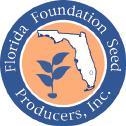
FloridaBlueberryGrowers.org The Blueberry News | 39
x = Licensed for USA x¹ = Licensed for USA (excluding AZ, CA, OR, and WA) Agri-Starts Agromillora Florida Alma Pak Blue Star Nursery Clear Springs Farming Cornelius Farms Dole Diversified North America Fall Creek Farm & Nursery Ferguson Farms Island Grove Oponay Farms Oregon Blueberry Phyllatech Plant Development Services Southern Propagation Partners Southland Berry Plantation Florida Blueberry Nursery Towers Family Farms Wayne's Homestead Wild Goose Farms Abundance (PP16476) x ¹ x ¹ x x x Arcadia™ 'FL07-399' (PP26313) x x x ¹ x x x x x x x x Avanti™ 'FL06-203' (PP26312) x x x x x x x x Bobolink™ 'FL03-291' (PP21377) x Chickadee™ 'FL04-235' (PP21376) x x ¹ x x x x x Colossus (PP33802) x x ¹ x x x x Endura™ 'FL06-377' (PP26679) x x x x x x Farthing (PP19341) x ¹ x ¹ x ¹ x ¹ x x x x x ¹ x ¹ FL09-216 (PPAF) x FL11-137 (PPAF) x FLX-1 (PP19342) x Flicker™ 'FL96-43' (PP21554) x x x Indigocrisp™ 'FL98-325' (PP26523) x x x x x x ¹ Keecrisp™ 'FL06-556' (PP27771) x x x x x x ¹ x ¹ Kestrel™ 'FL02-40' (PP21719) x x ¹ x x x x x x Magnus (PP32181) x x x Meadowlark™ 'FL01-173' (PP21553) x x ¹ x x x x x x x ¹ x ¹ x ¹ Optimus (PP32028) x x x ¹ x x x x x x ¹ x ¹ x Patrecia (PP27740) x x x x x ¹ Primadonna (PP20181) x ¹ x x x Raven™ 'FL05-627' (PP21374) x x Savory (PP15109) x Scintilla (PP19233) x ¹ x Sentinel (PP33896) x x x x Snowchaser (PP19503) x ¹ x ¹ x x Springhigh (PP16404) x ¹ x ¹ x x x Springwide (PP16333) x ¹ x Sweetcrisp (PP20027) x ¹ x x x Vireo™ 'FL05-107' (PP21375) x x x ¹ Wayne (PP32182) x x x
KPHITE® 7LP & Sizer XL work systemically throughout the plant, delivering vital disease protection and nutrients right where the plant needs it. KPHITE® 7LP brings its EPA registered disease protection from its unique, proven fungicide bactericide molecule Sizer® XL provides totally soluble Phosphate and Potassium to encourage consistent fruit set and superior production.
KPHITE® 7LP and Sizer® XL are trusted by growers and proven through independent trials
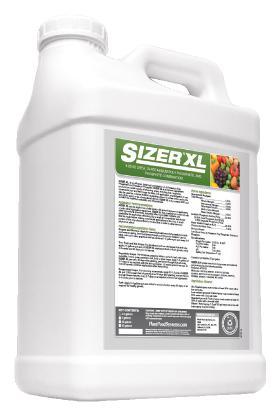

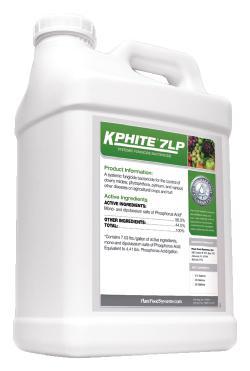
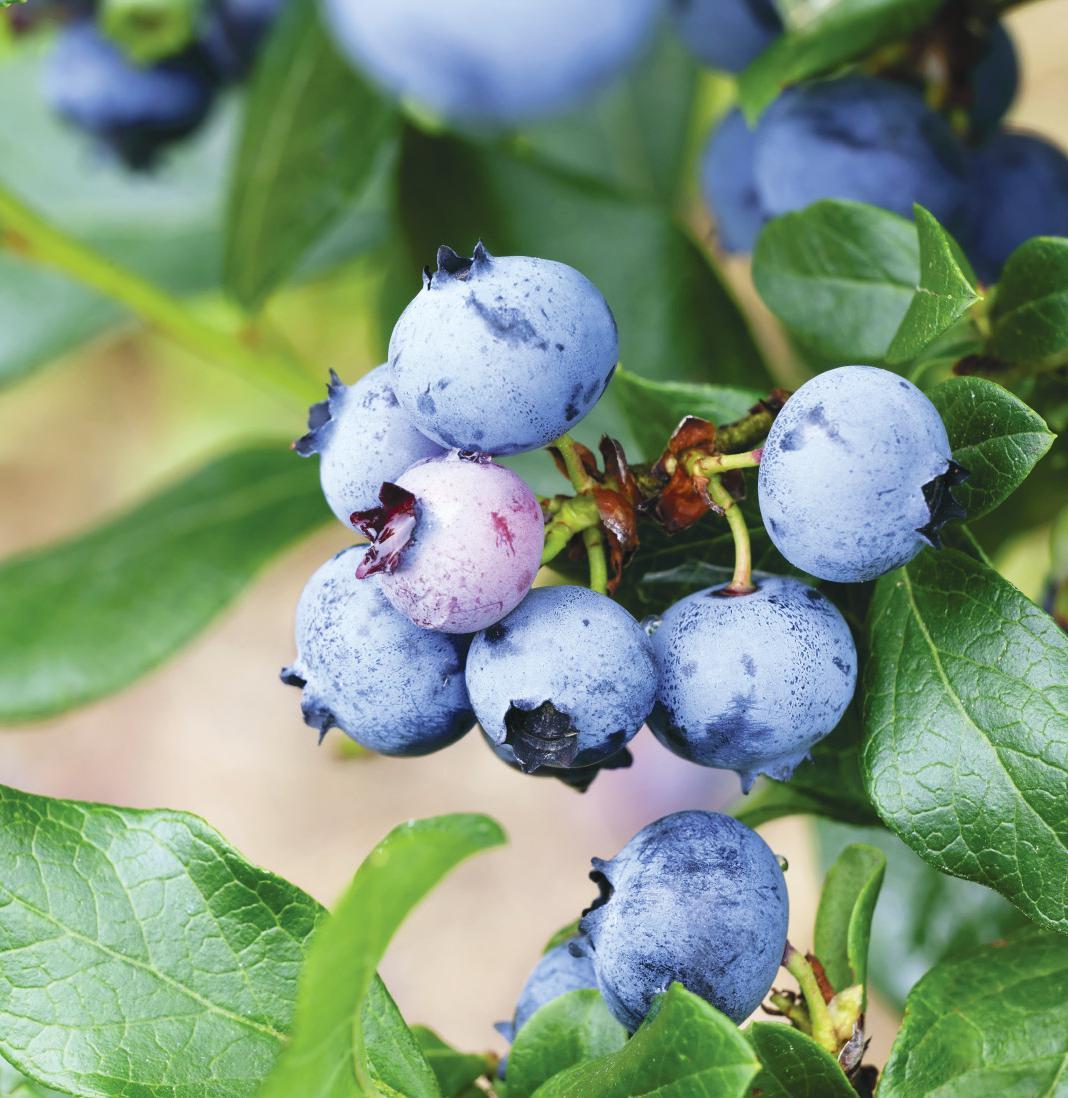
40 | The Blueberry News FloridaBlueberryGrowers.org THE SYSTEMIC COMBINATION FOR A S U P ERIOR B LUEBER R Y CR O P 800 -343 -77 75 • P.O. B OX 7 75 • ZEL LWOO D, FL 3 2798 • PlantFoodSystems com K-PHITE ® 7LP and Sizer® XL are registered trademarks of Plant Food Systems, Inc &






















































































































































